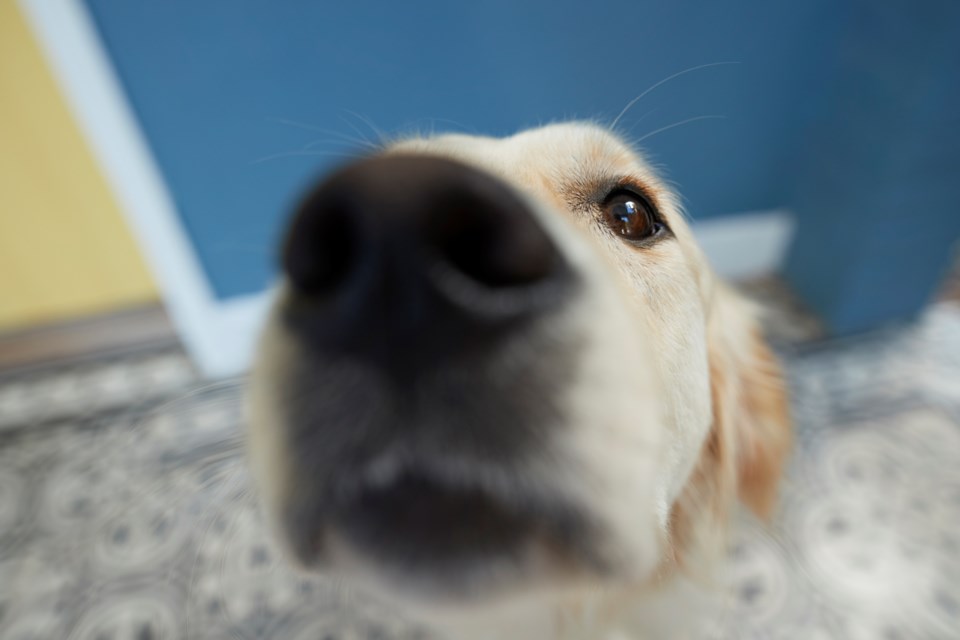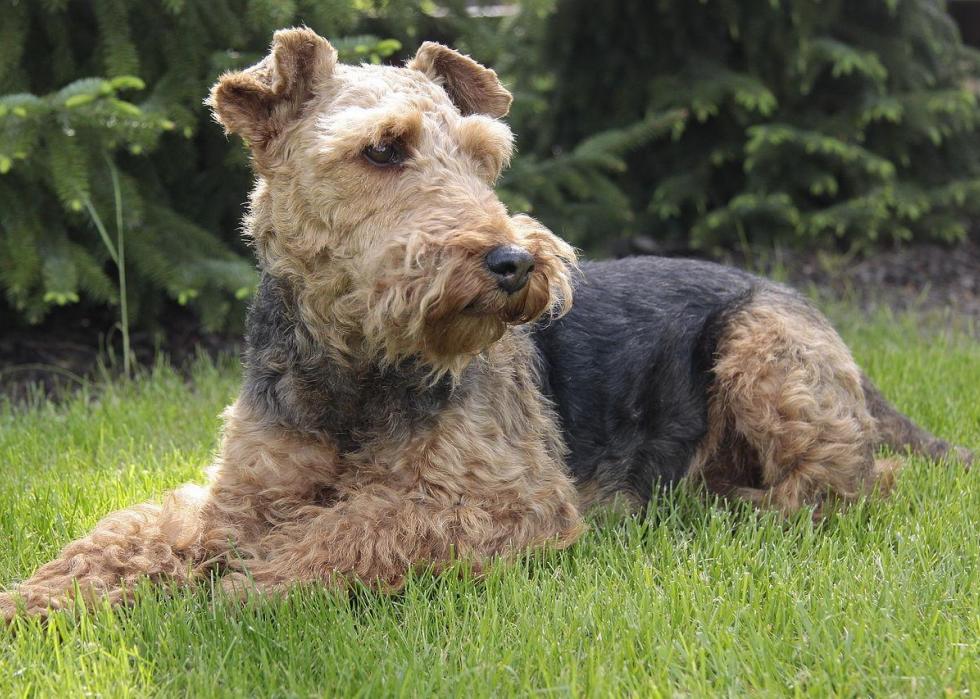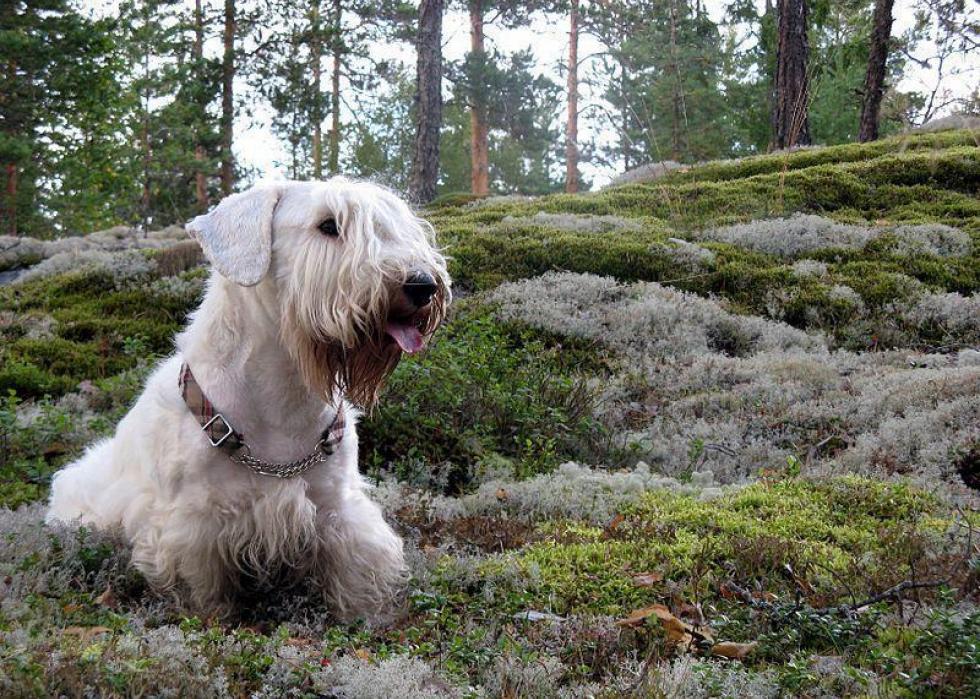When it comes to obedience, a variety of factors can affect a dog's disposition. Training quality and duration, environmental factors, and the individual puppy personalities are all major contributors—but how much can a dog's breed and genetic makeup come into play?
In 1994, neuropsychological researcher Stanley Coren sought to compile the definitive resource for understanding the inner workings of our canine companions, captured within his book, ."
Coren's research was based on extensive surveys of 208 obedience judges from the American and Canadian Kennel Clubs, representing half of all judges in North America. According to Coren, 51% of a dog's intelligence stems from its genes while 49% is based on environmental circumstances.
Coren ultimately collected statistically significant data for 140 recognized dog breeds, ranking them by their working and obedience intelligence. This form of canine intelligence represents a breed's ability to learn and respond to commands and training, described by Coren as a "measure of what the dog can do for humans."
Drawing from Coren's research, compiled the breeds that ranked in the lowest half of working and obedience intelligence. Each breed is broken down by their estimated understanding of new commands and ability to obey a known command the first time while adding in details on their trainability and history as a breed. Coren's research evaluated the animal's problem-solving capabilities, obedience, memory, social training, and powers of observation.
Read on to see why not all retrievers are created equal in trainability, and why you can't write off lapdogs when it comes to their guard dog abilities.
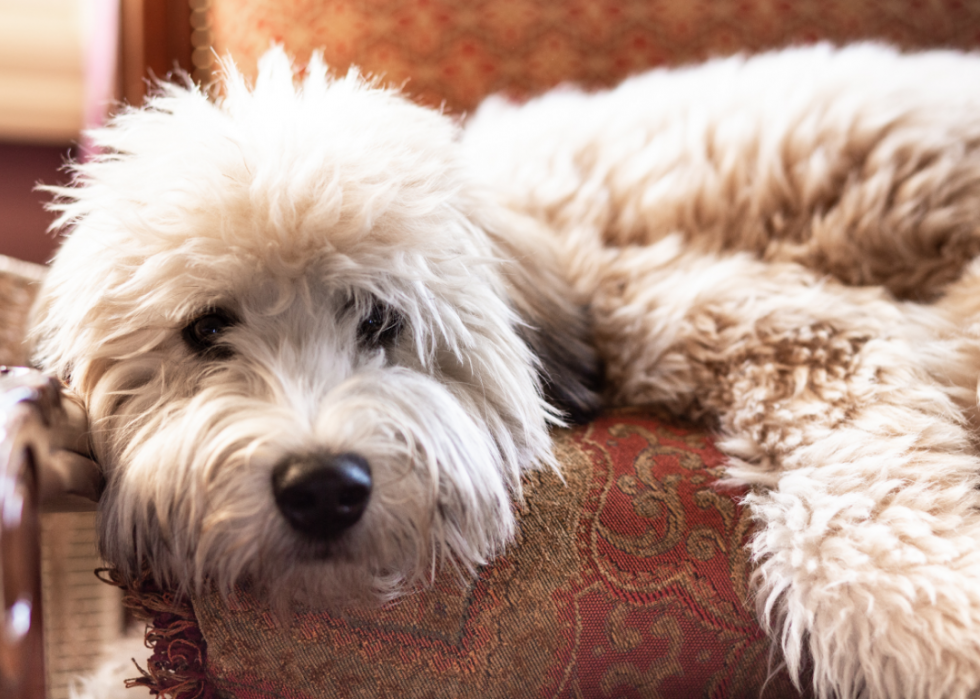
#40. Soft coated Wheaten terrier (tie)
- Understanding of new commands: 25 to 40 repetitions
- Obey first command: 50% of the time or better
Originally bred as an Irish hunting dog, the soft coated Wheaten terrier has been described as "" for their muscular body sheathed in a soft coat.
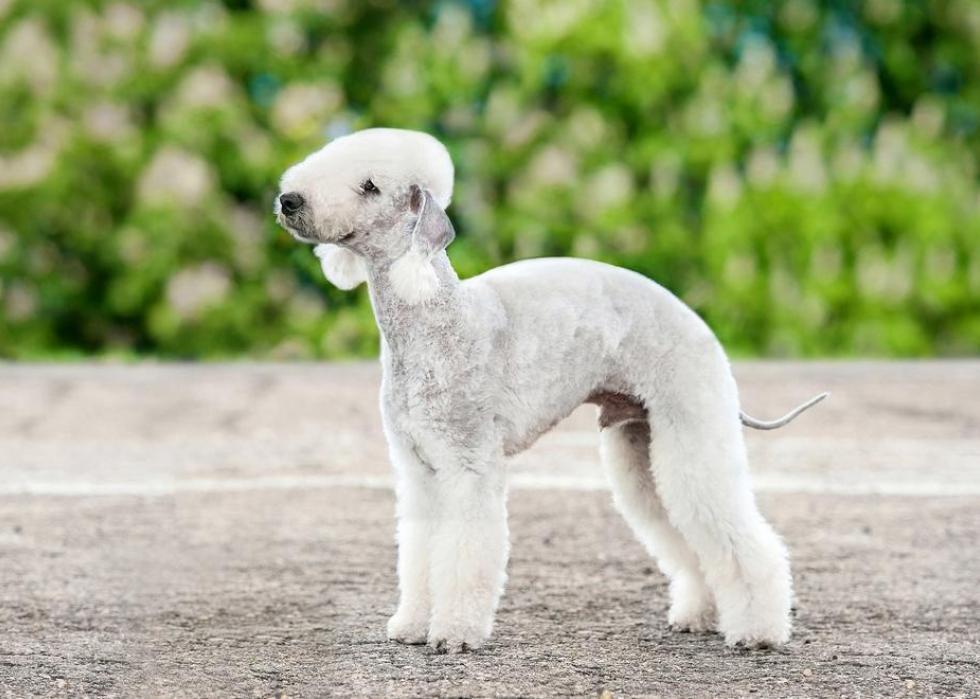
#40. Bedlington terrier (tie)
- Understanding of new commands: 25 to 40 repetitions
- Obey first command: 50% of the time or better
Bedlington terriers, named for a small town in Northern England, share both the general physical makeup and the temperament of a sheep. They boast a thick white coat and their bodily structure makes them capable of galloping at exceptionally fast speeds.
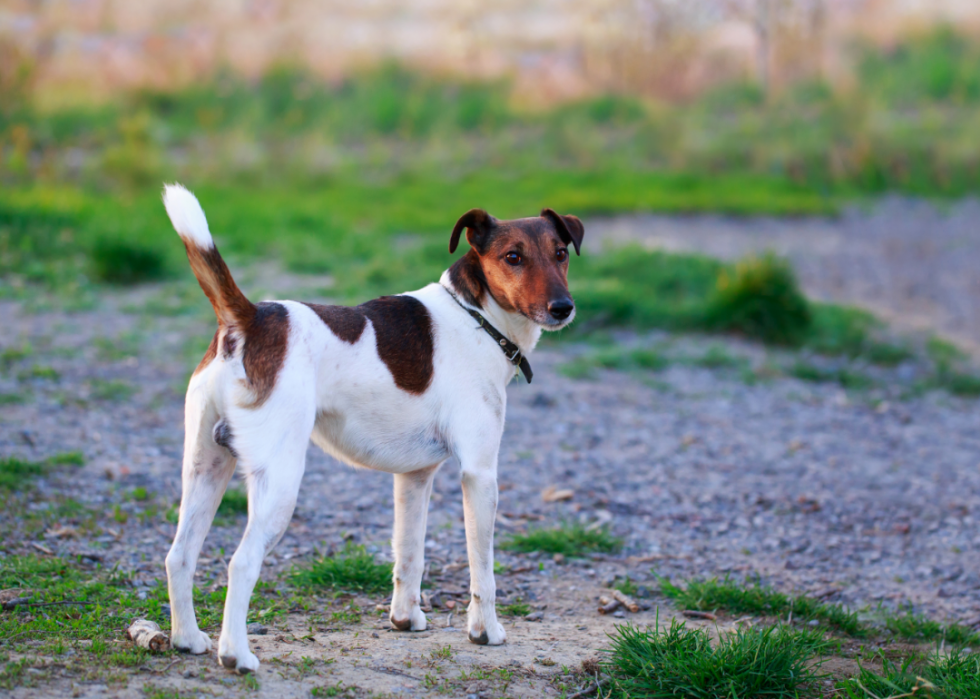
#40. Smooth fox terrier (tie)
- Understanding of new commands: 25 to 40 repetitions
- Obey first command: 50% of the time or better
Fox terriers are easily distinguishable from the stark contrast between the colourful coats, which cover their head, and the white coats that typically cover most of the rest of their bodies. Unlike their close relatives in the wire fox terrier, this breed has .
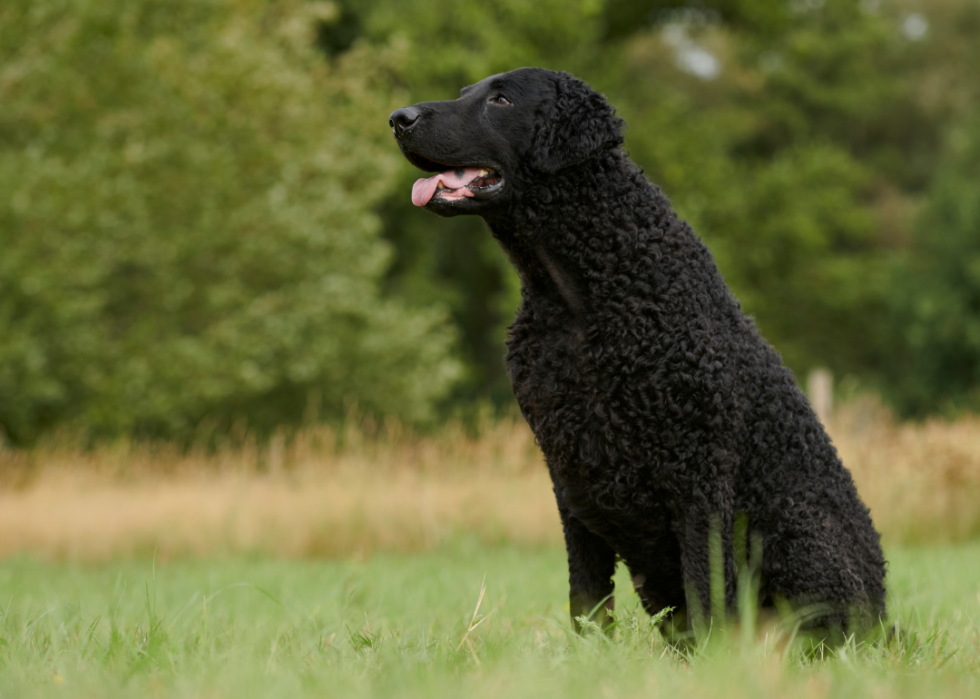
#39. Curly coated retriever (tie)
- Understanding of new commands: 25 to 40 repetitions
- Obey first command: 50% of the time or better
The curly coated retriever was originally bred in England for fetching waterfowl. It is important for owners of this breed to incorporate fun into the training process to keep the dog's attention.
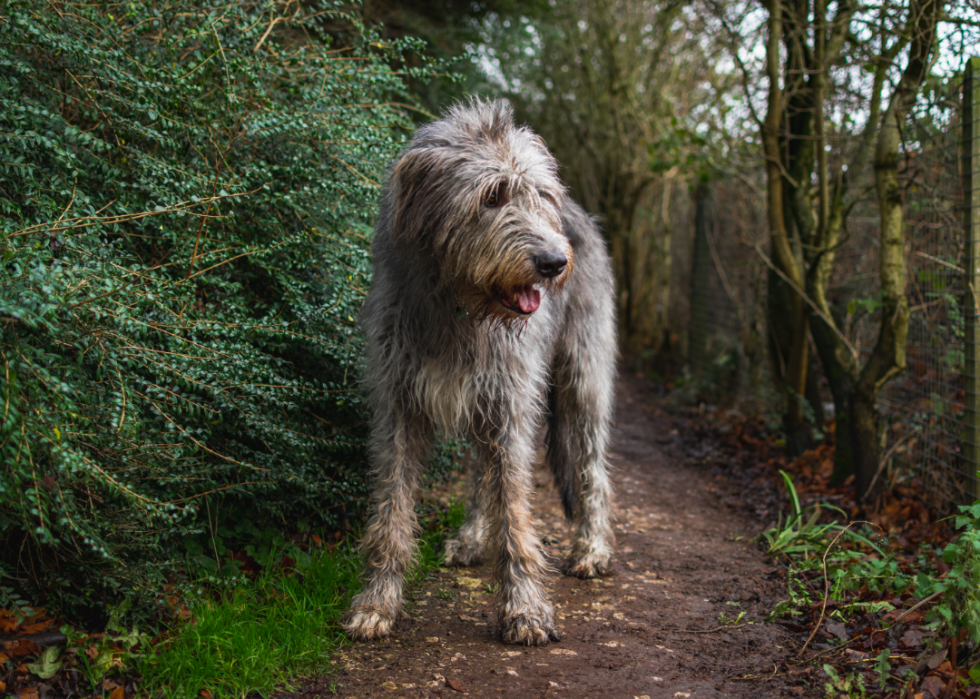
#39. Irish wolfhound (tie)
- Understanding of new commands: 25 to 40 repetitions
- Obey first command: 50% of the time or better
The Irish wolfhound is the tallest of all breeds officially recognized by the American Kennel Club, and while they stand , they are gentle giants. The Irish wolfhound is known to be one of the most caring and faithful dog breeds.
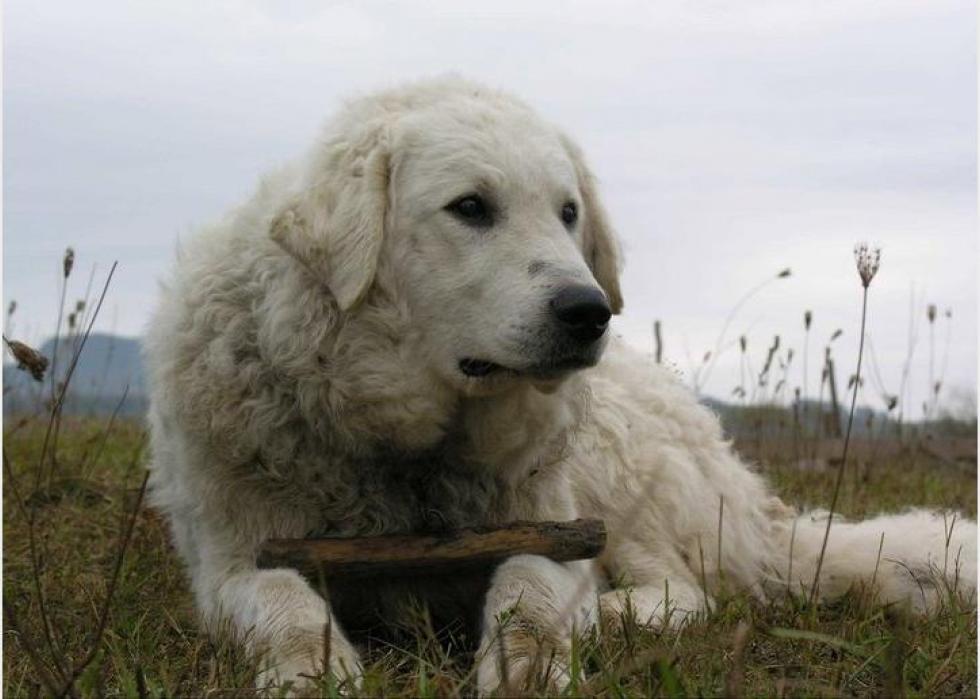
#38. Kuvasz (tie)
- Understanding of new commands: 25 to 40 repetitions
- Obey first command: 50% of the time or better
Hungary's beautiful Kuvasz breed resembles American favourites such as the Labrador retriever and golden retriever, though the working dog distinguishes itself through a unique snow-white coat. During his reign in the mid-15th century, King Matthias I of Hungary trusted his "Kuvs" more than his actual palace guards, which speaks to their loyal nature.
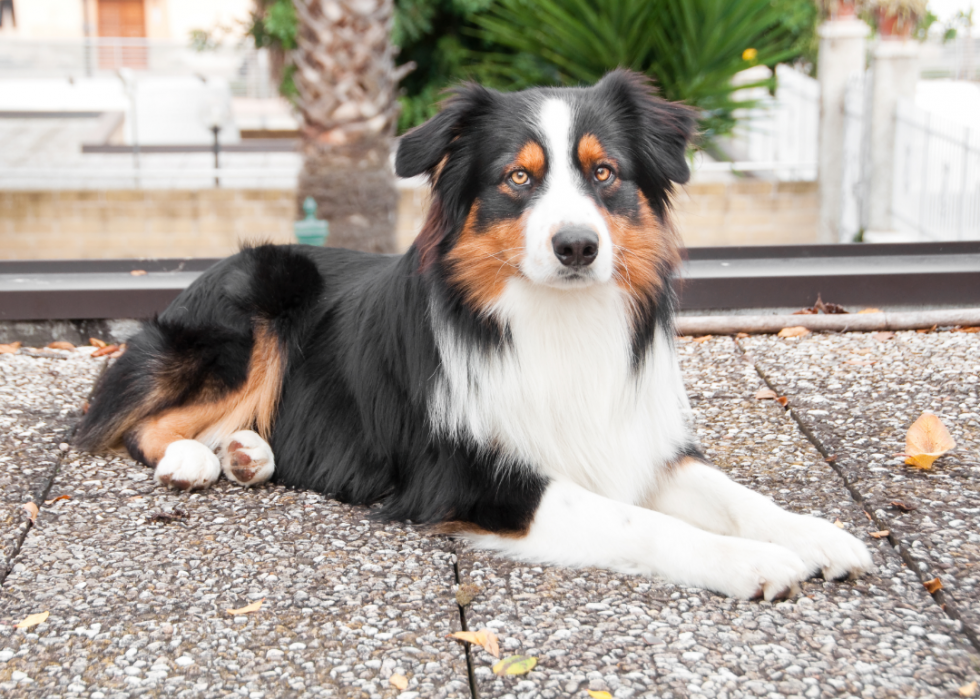
#38. Australian shepherd (tie)
- Understanding of new commands: 25 to 40 repetitions
- Obey first command: 50% of the time or better
The Australian shepherd is a high-energy breed with a relatively prior to its appearance in the U.S. Known for its territorial and protective nature, this breed requires careful and active training.
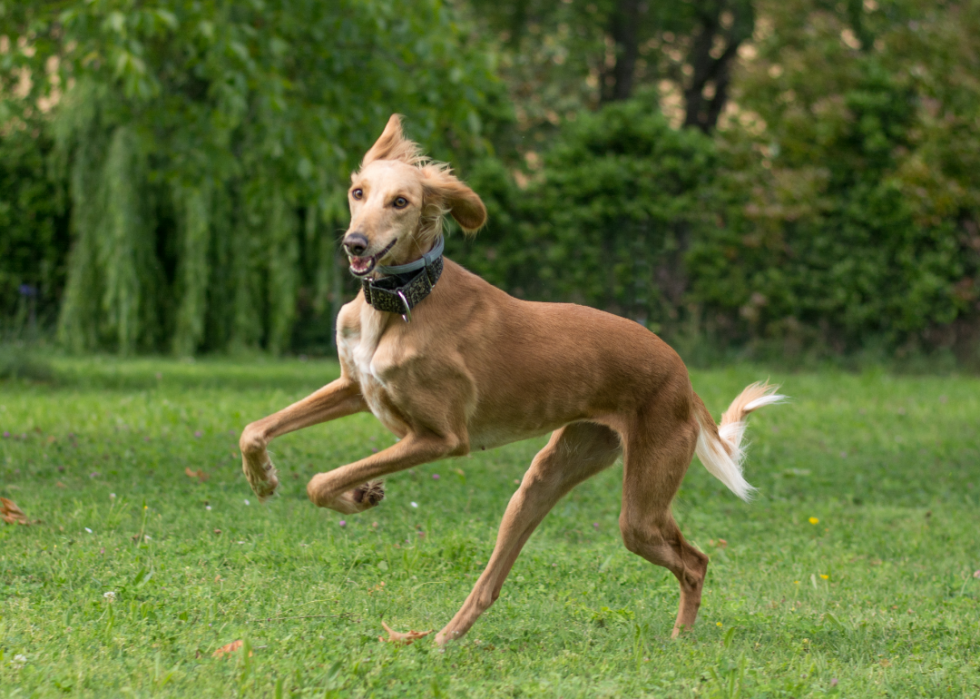
#37. Saluki (tie)
- Understanding of new commands: 25 to 40 repetitions
- Obey first command: 50% of the time or better
Salukis have origins in the Middle East and resemble greyhounds. The breed is the .
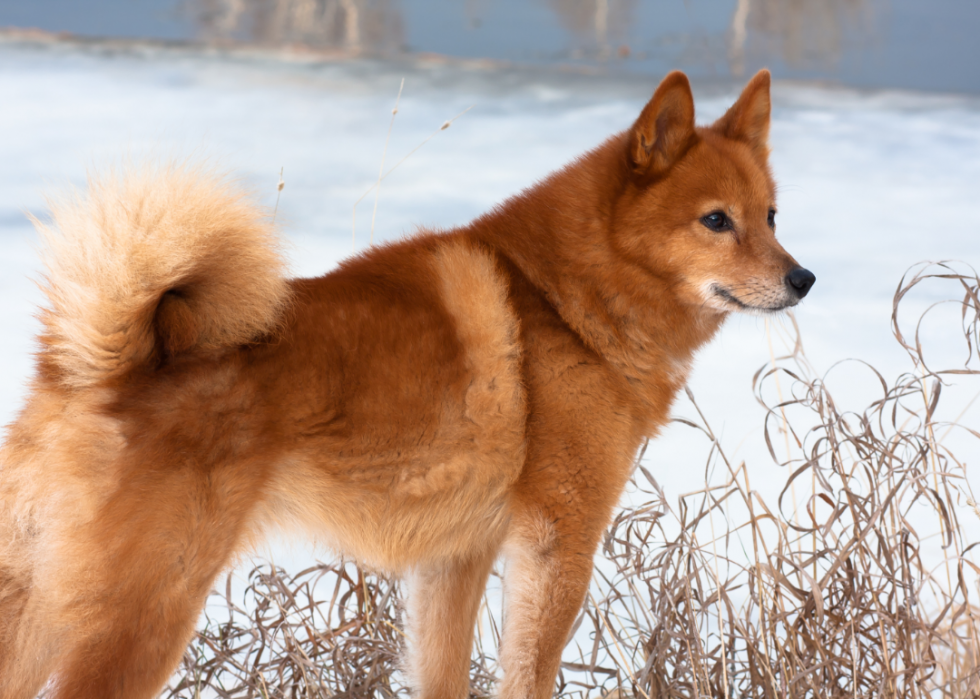
#37. Finnish spitz (tie)
- Understanding of new commands: 25 to 40 repetitions
- Obey first command: 50% of the time or better
Finnish spitzs, also known affectionately as Finkies, are amongst the loudest, most vocal canines around the world, and while this may be unfavourable to the casual dog lover, fanatics take great pride in these dogs' noises. In Finland, owners congregate to determine whose Finkie is to be the dog responsible for the best yodelling.
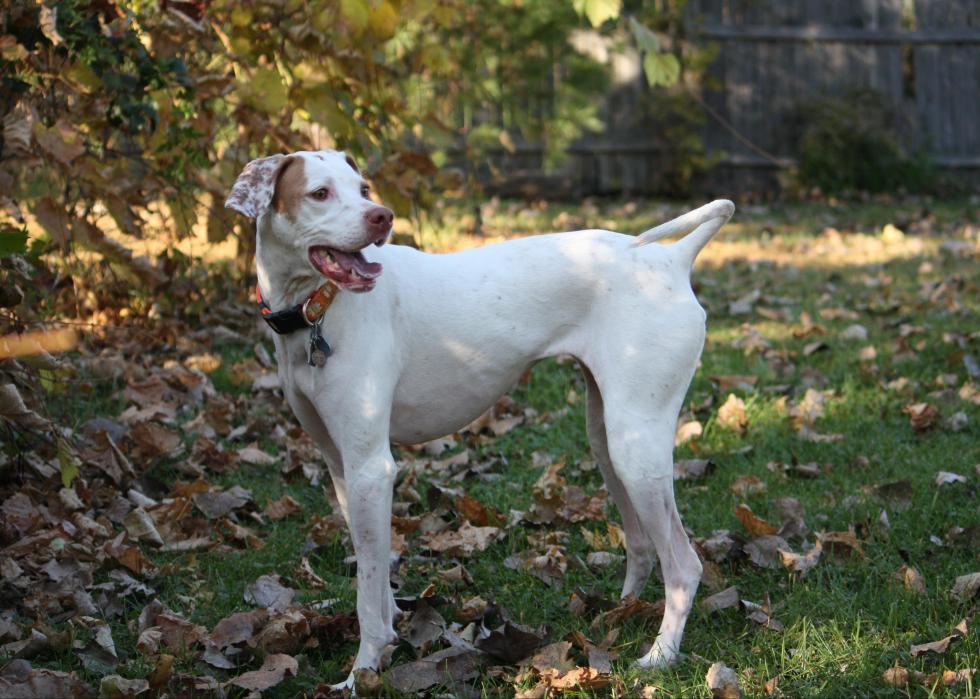
#37. Pointer (tie)
- Understanding of new commands: 25 to 40 repetitions
- Obey first command: 50% of the time or better
The etymology of the "pointer" is fairly self-evident. These runners' companions assume a directional standing position, which is especially useful for hunters looking to locate game birds.
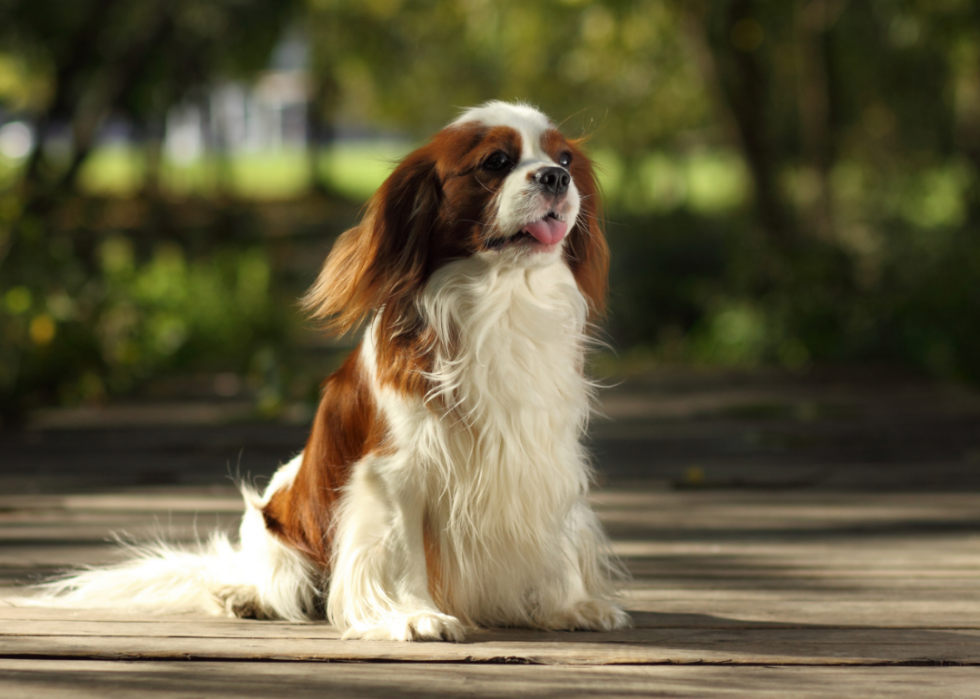
#36. King Charles spaniel (tie)
- Understanding of new commands: 25 to 40 repetitions
- Obey first command: 50% of the time or better
These short, hairy spaniels with big, beady eyes were amongst 17th-century British monarchs Charles I and Charles II, and the breed was named in the latter's honor as such. The breed comes in four distinct coat colours, each of which is known for an association with one royal family or another: Blenheim (chestnut and white), black and tan, ruby, and tricolor.
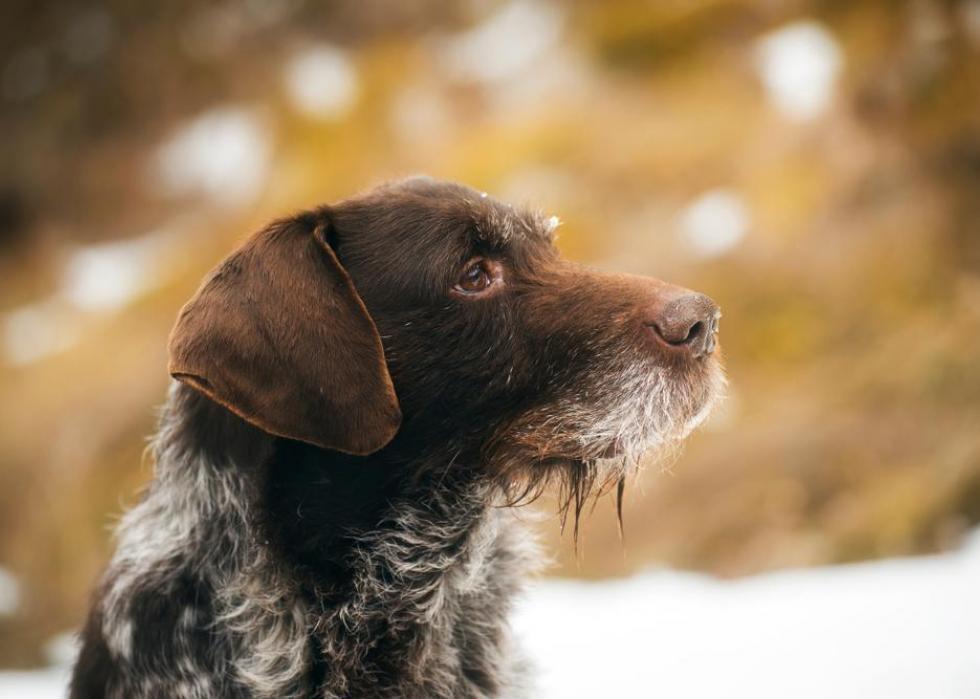
#36. German wirehaired pointer (tie)
- Understanding of new commands: 25 to 40 repetitions
- Obey first command: 50% of the time or better
The German wirehaired pointer greatly resembles the standard pointer in that the two share a comparable build and the same iconic directional stance. They differ in coat, however, since the German wirehaired pointer boasts a homogeneous mix of gray and brown hairs across its body, along with a brown head, with golden snout hairs resembling a lion's mane.
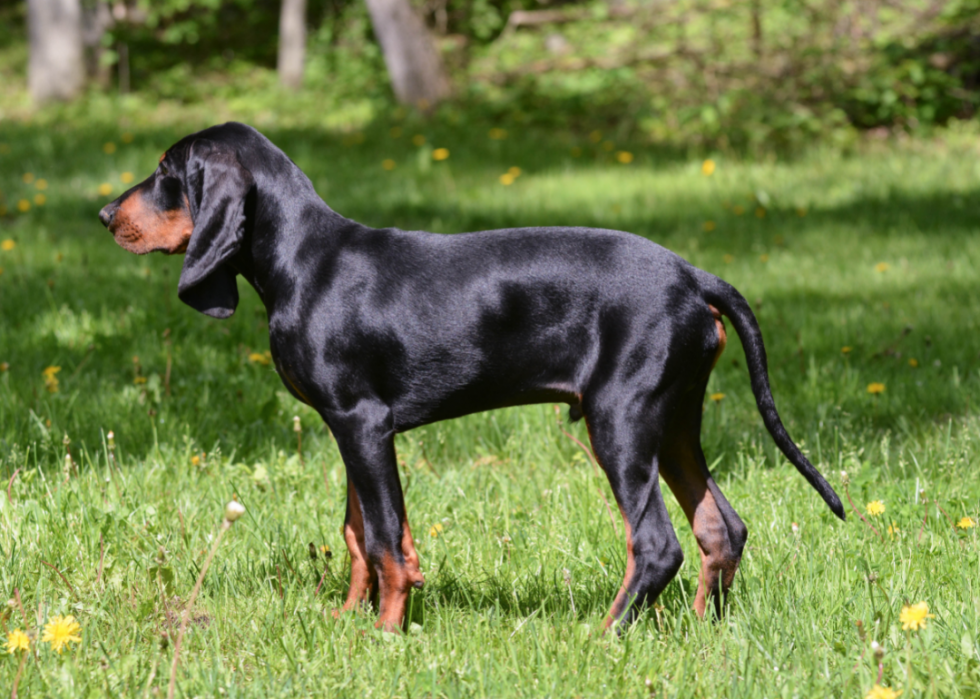
#36. Black and tan coonhound (tie)
- Understanding of new commands: 25 to 40 repetitions
- Obey first command: 50% of the time or better
The first coonhound breed recognized by the American Kennel Club back in 1945, the black and tan is recognizable anywhere because of its transitioning coat as well as its long, droopy ears.
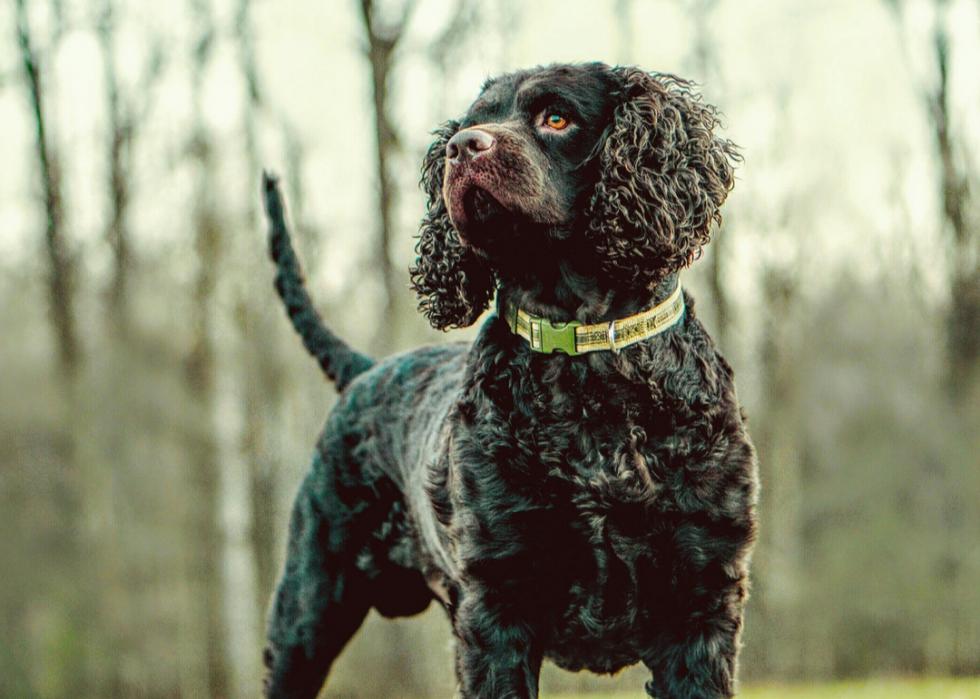
#36. American water spaniel (tie)
- Understanding of new commands: 25 to 40 repetitions
- Obey first command: 50% of the time or better
A relatively smaller breed, weighing anywhere between 25 to 45 pounds, and measuring anywhere between 15 to 18 inches tall, the American water spaniel hails from the . Its soft brown fur and curly haired ears make it exceedingly unique, especially considering this rare breed is only about 3,000 strong today.
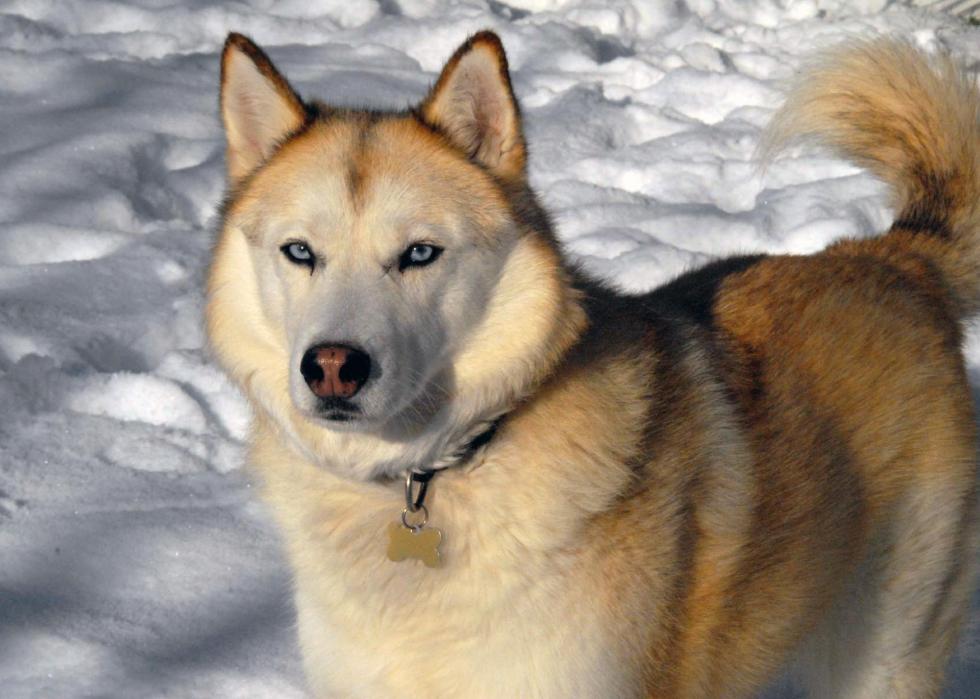
#35. Siberian husky (tie)
- Understanding of new commands: 25 to 40 repetitions
- Obey first command: 50% of the time or better
Coming in various coats and sizes, the Siberian husky is the pride of the Tundra, as the nimble-footed dog serves both as a productive worker and a loyal companion. The breed first gained notoriety in the early 1900s when they began dominating sled races.
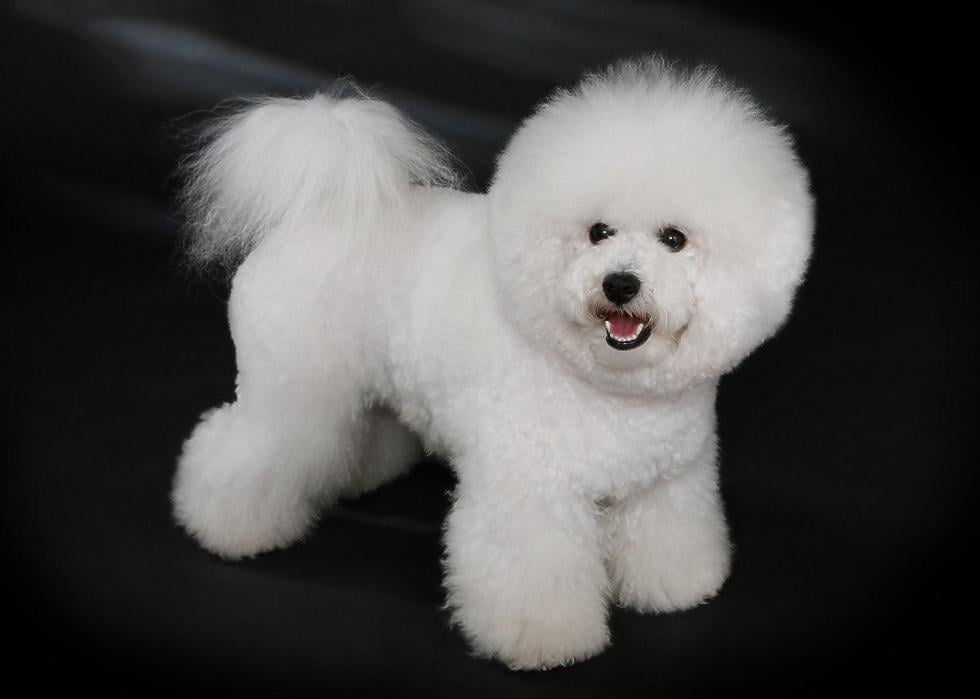
#35. Bichon Frise (tie)
- Understanding of new commands: 25 to 40 repetitions
- Obey first command: 50% of the time or better
This breed first gained popularity amongst European royalty in the 13th century in the likes of Italy, France, and Spain, and it's easy to see why. The Bichon Frise's small frame, bright white coat, and bouncy walking style make it a veritable puffball with legs.
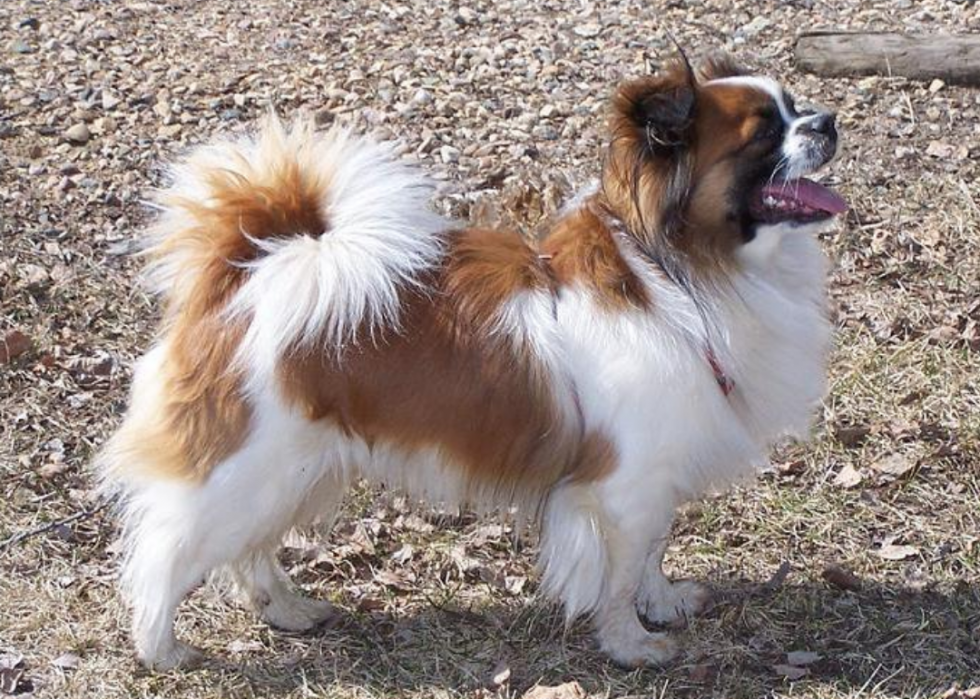
#34. Tibetan spaniel (tie)
- Understanding of new commands: 25 to 40 repetitions
- Obey first command: 50% of the time or better
This breed was originally bred to keep watch on the walls of Tibetan monasteries since their excellent vision allowed them to see exceedingly long distances. Ironically enough, though, it is now fairly difficult for the casual owner to get a Tibbie to stand still, as the breed is amongst the bouncier and more energetic of the spaniels.
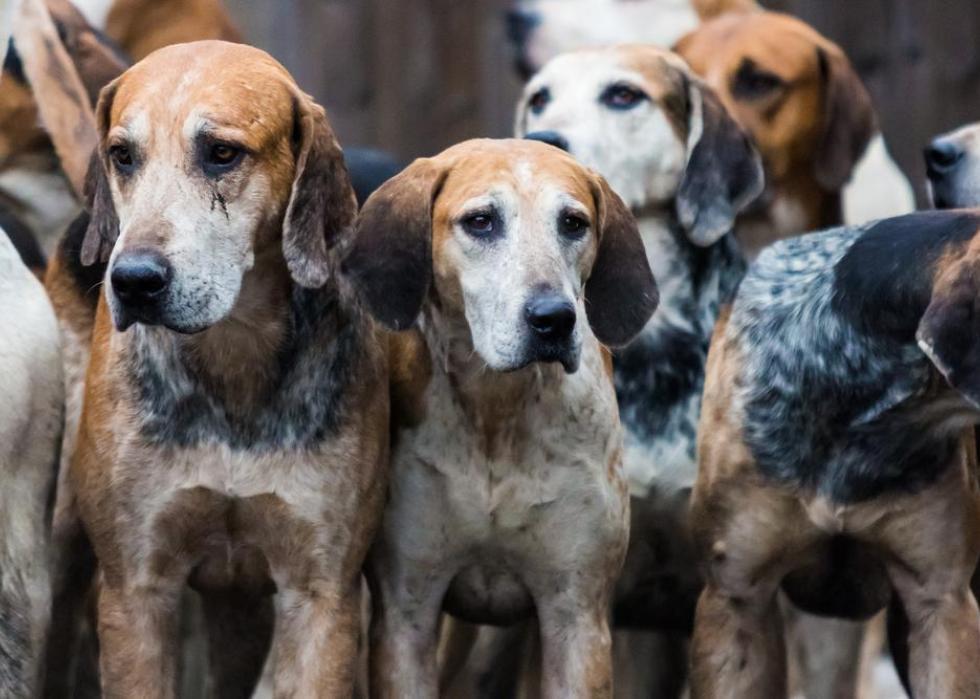
#34. English foxhound (tie)
- Understanding of new commands: 25 to 40 repetitions
- Obey first command: 50% of the time or better
English foxhounds are not too physically different from their cousins across the pond, and it may be difficult to distinguish them at first glance. American foxhounds boast a typically darker, more pronounced coat at different parts of their body while their English counterparts are also marginally taller.
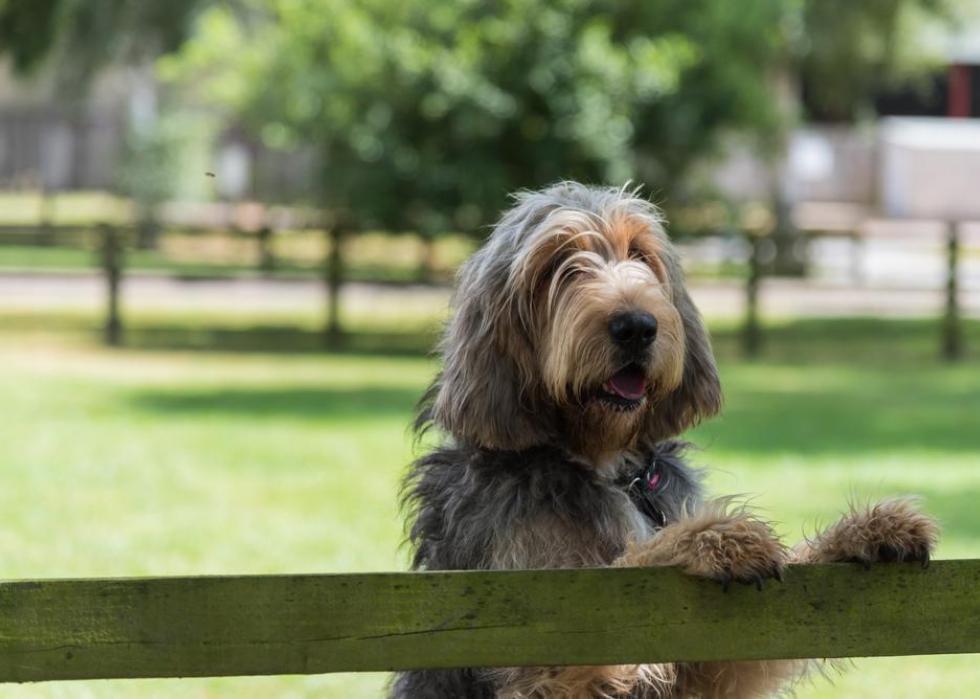
#34. Otterhound (tie)
- Understanding of new commands: 25 to 40 repetitions
- Obey first command: 50% of the time or better
This cheerful, energetic breed combines webbed feet, a strong build, and a razor-sharp sense of smell to serve as a great hunting dog.
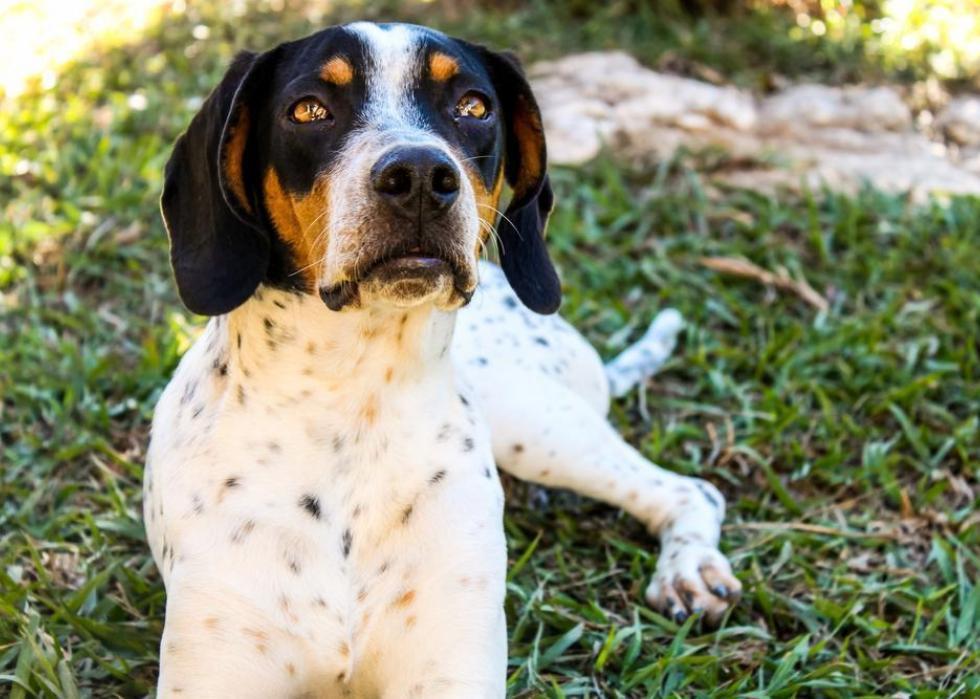
#34. American foxhound (tie)
- Understanding of new commands: 25 to 40 repetitions
- Obey first command: 50% of the time or better
American foxhounds typically have a black, white, and tan coat. American foxhounds love room to run around in and usually have high energy, though they're also gentle, and get along well with children and other animals.
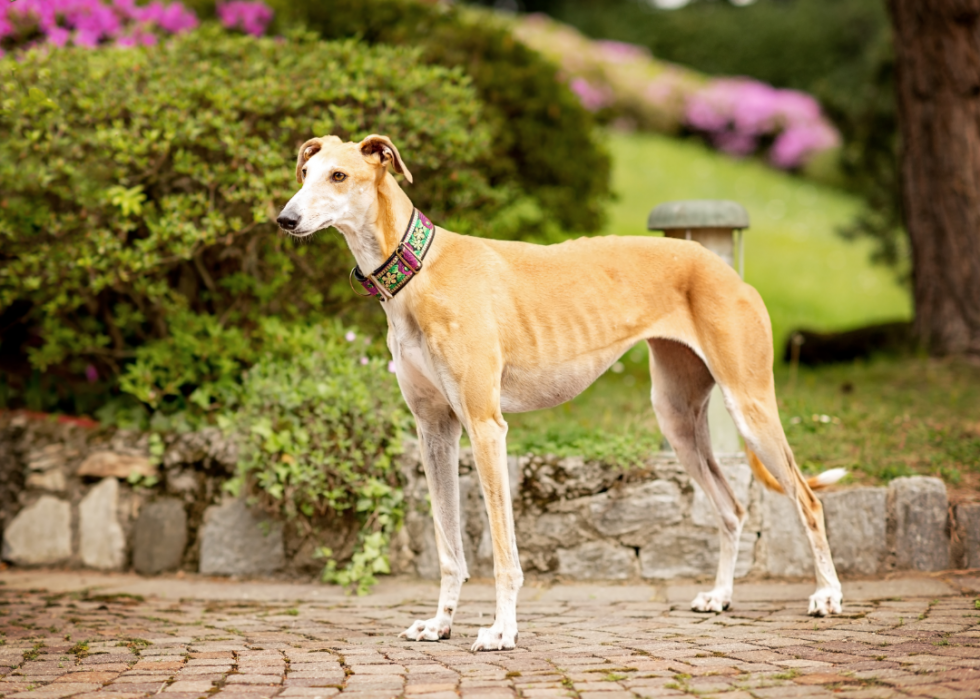
#34. Greyhound (tie)
- Understanding of new commands: 25 to 40 repetitions
- Obey first command: 50% of the time or better
Capable of running over 40 miles per hour, greyhounds are slim and athletic with long legs and a short, aerodynamic coat. However, they were bred for sprinting, not endurance; greyhounds sleep around 18 hours a day.
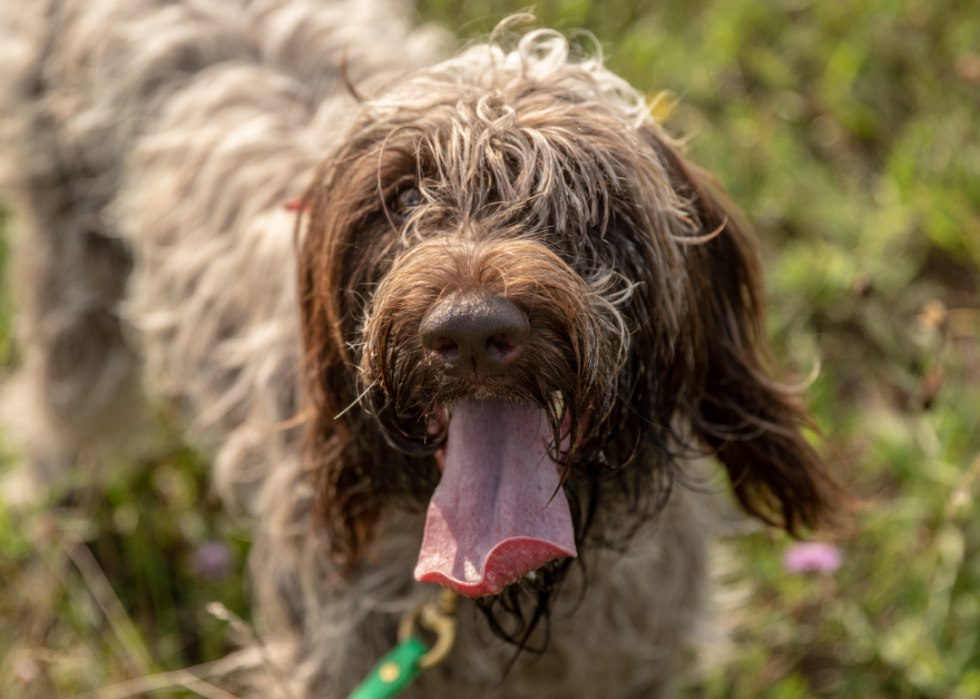
#34. Wirehaired pointing griffon (tie)
- Understanding of new commands: 25 to 40 repetitions
- Obey first command: 50% of the time or better
Popular both as a show dog and a gun dog meant to assist hunters in retrieving game, the wirehaired pointing griffon is relatively rare in the United States.
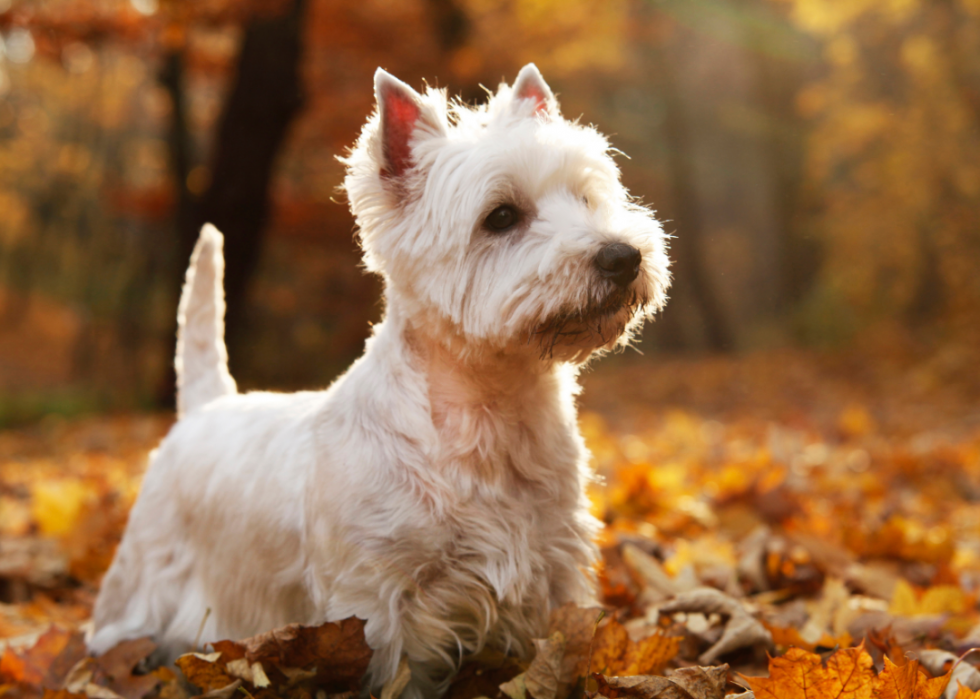
#33. West Highland white terrier (tie)
- Understanding of new commands: 25 to 40 repetitions
- Obey first command: 50% of the time or better
Westies are as a breed and have become increasingly popular in the United States. Now the 42nd most popular breed overall, they rank only behind Yorkies and Bostons amongst all terrier breeds, which likely has to do with their small frame and thick white coat.
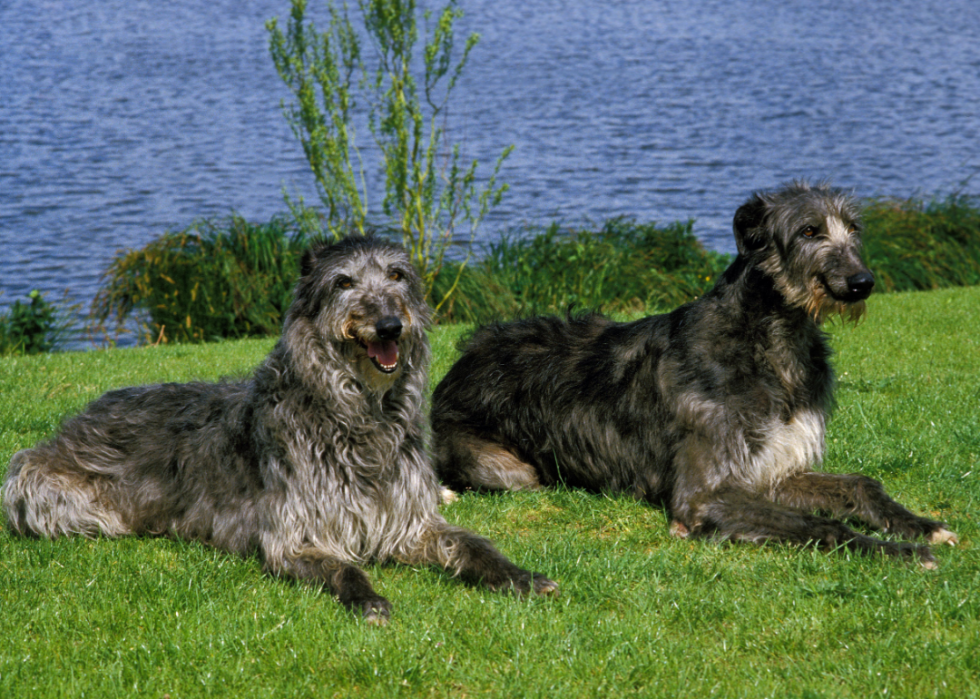
#33. Scottish deerhound (tie)
- Understanding of new commands: 25 to 40 repetitions
- Obey first command: 50% of the time or better
Larger in size than the greyhound, the Scottish deerhound is docile and friendly, and prefers a great deal of exercise in large, open areas. A Scottish deerhound named Cleod was featured in two "Harry Potter" movies as the animagus, or animal form, of Sirius Black.
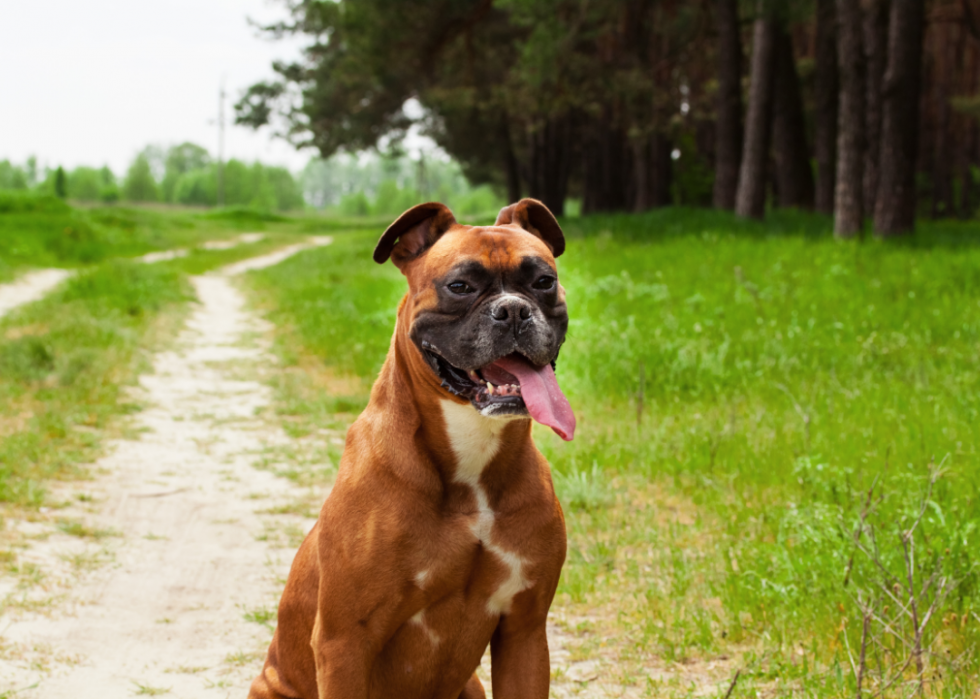
#32. Boxer (tie)
- Understanding of new commands: 25 to 40 repetitions
- Obey first command: 50% of the time or better
Boxers are and have won Best in Show at Westminster four times: in 1947, 1949, 1951, and 1970. Training can pay off, but trainers need to be patient and consistent—this intelligent breed invents their own form of obedience.
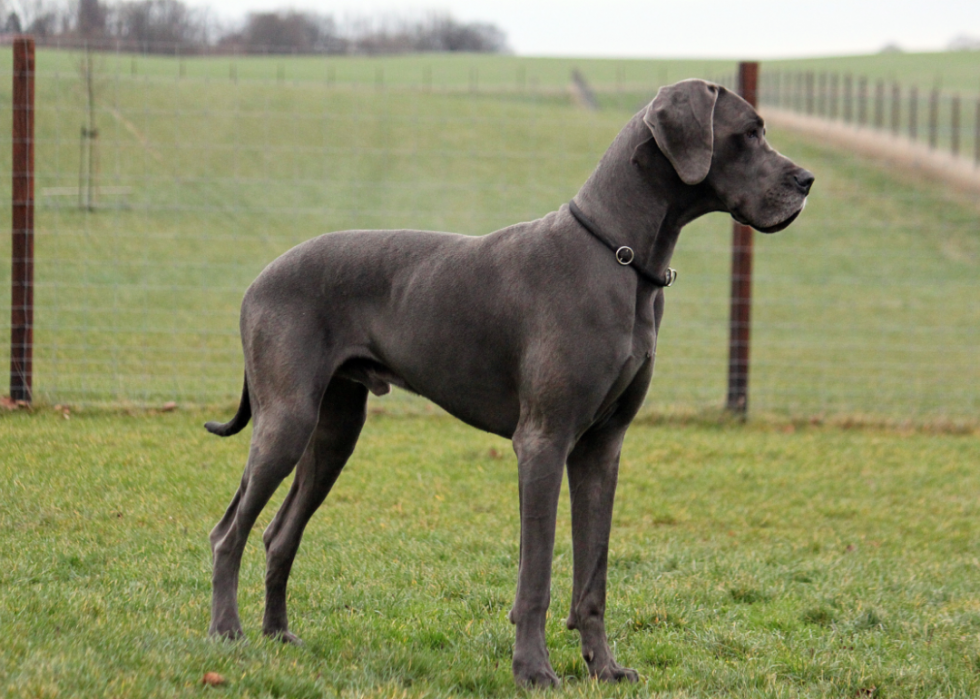
#32. Great Dane (tie)
- Understanding of new commands: 25 to 40 repetitions
- Obey first command: 50% of the time or better
Great Danes are docile and great for families, as long as they're trained early. The tallest dog ever recorded was a Great Dane named Zeus, who was 44 inches tall—nearly 4 feet—from paw to shoulder.

#31. Dachshund (tie)
- Understanding of new commands: 25 to 40 repetitions
- Obey first command: 50% of the time or better
With a , these short, furry "wiener dogs" are a fan favourite in the United States. Because of the dachshund's peculiar frame, it is important that owners do not overfeed them or they could run the risk of subjecting their dog to a herniated or slipped disc.
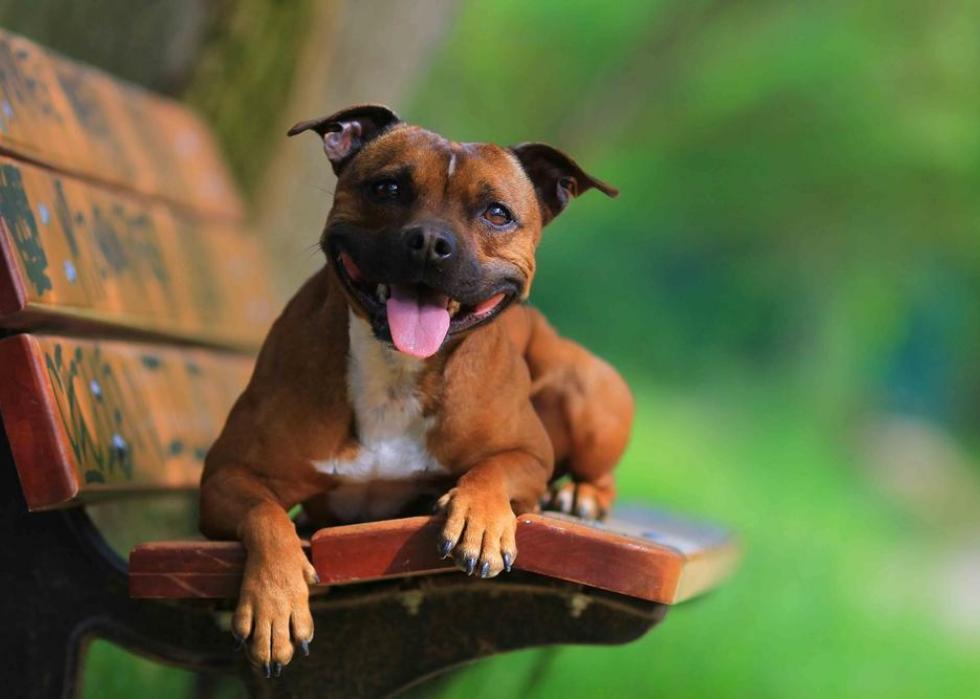
#31. Staffordshire bull terrier (tie)
- Understanding of new commands: 25 to 40 repetitions
- Obey first command: 50% of the time or better
Staffordshire bull terriers were once famous fighters, struggling for victory in England's baiting rings. The breed has been transformed to be kind and patient, but the AKC still recommends that young Staffies be socialized with other dogs early to develop a more easy-going nature.

#30. Alaskan malamute
- Understanding of new commands: 25 to 40 repetitions
- Obey first command: 50% of the time or better
Alaskan malamutes were originally bred to be sled dogs. They are pack animals that require their owners to establish themselves as head of the household through early training.
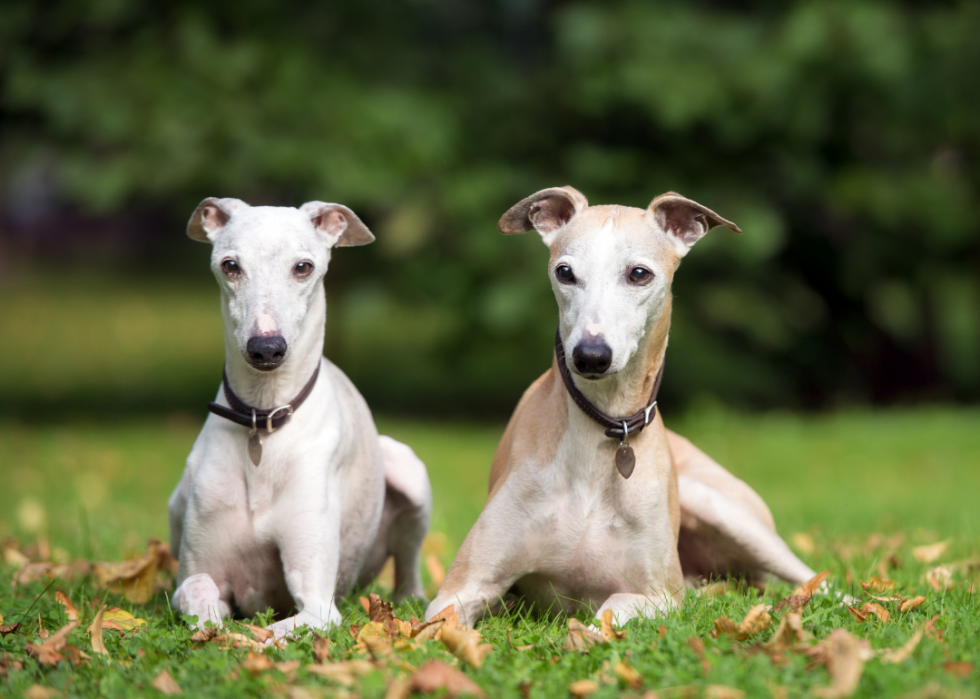
#29. Whippet (tie)
- Understanding of new commands: 25 to 40 repetitions
- Obey first command: 50% of the time or better
Whippets were originally bred to hunt rabbits and other small animals. Today, whippets are skilled with agility-based tasks—they also make great therapy dogs.
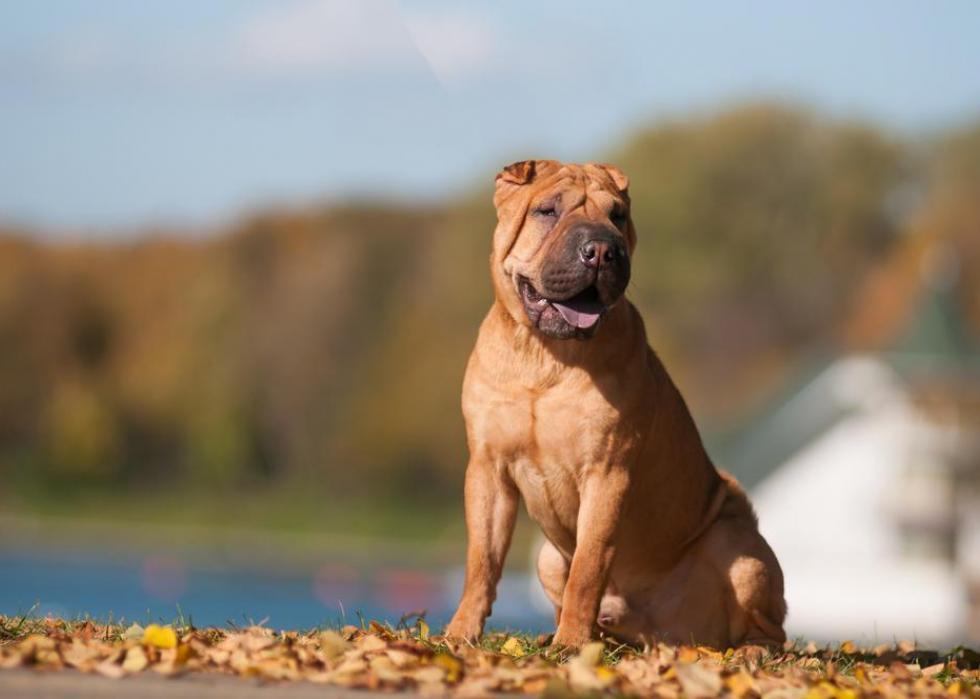
#29. Chinese shar pei (tie)
- Understanding of new commands: 25 to 40 repetitions
- Obey first command: 50% of the time or better
If you want a guard dog that will remain calm most of the time, but spring to attention in the face of danger, a Chinese shar pei is a good fit. These dogs have broad muzzles surrounded by folds of loose skin around their heads, necks, and shoulders; the name "shar pei" translates to "sand skin."
#29. Wire fox terrier (tie)
- Understanding of new commands: 25 to 40 repetitions
- Obey first command: 50% of the time or better
Wire fox terriers (or "wires") have a history in British fox hunts: This dog's job was to scare foxes out of their shelters so that hounds and hunters could chase them out in the open. There have been many famous wires throughout history, from Caesar, King Edward VII's favourite dog, to Asta, the co-star of William Powell and Myrna Loy's "Thin Man" movies. The breed is often seen on screen today.
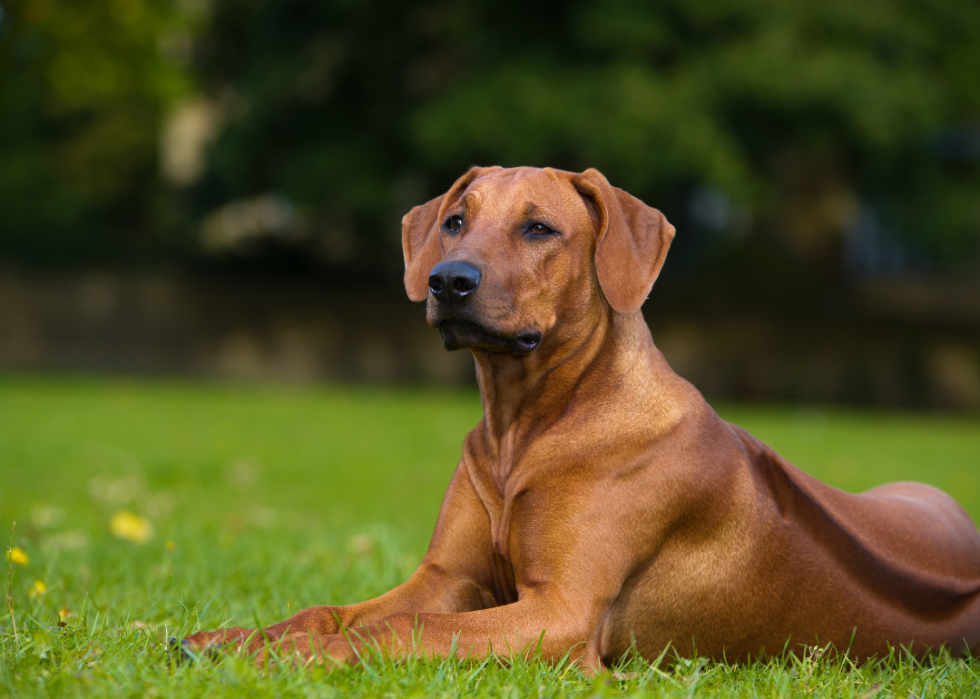
#28. Rhodesian ridgeback
- Understanding of new commands: 25 to 40 repetitions
- Obey first command: 50% of the time or better
As a proud home protector and aggressive hunter, the Rhodesian ridgeback has a history of hunting big game in centuries past. Although they're known for their friendliness, the breed can be a bit stubborn at times.
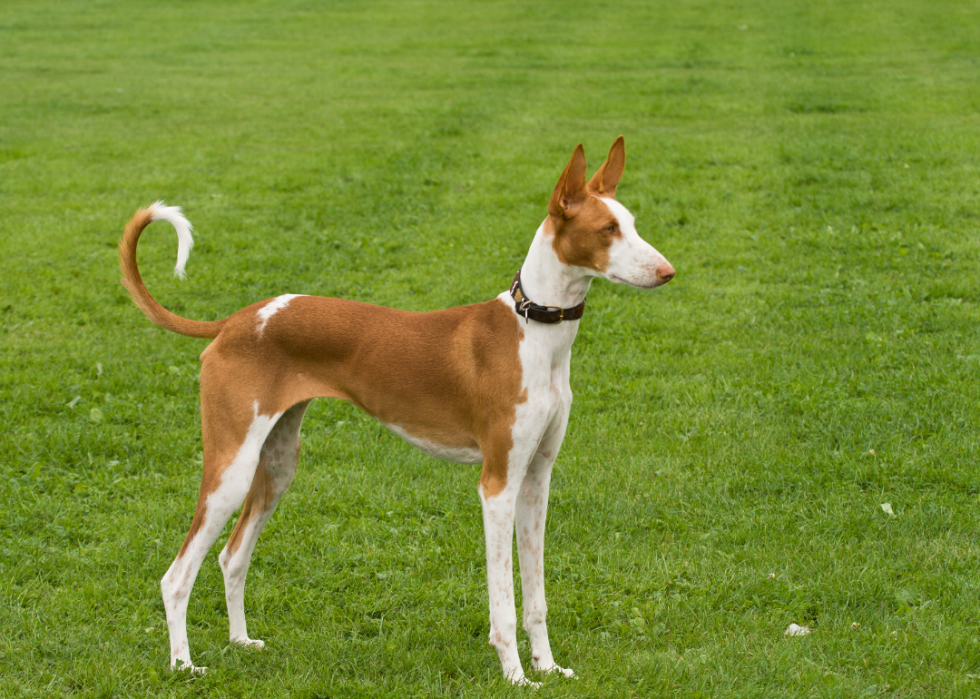
#27. Ibizan hound (tie)
- Understanding of new commands: 25 to 40 repetitions
- Obey first command: 50% of the time or better
Much like partygoers on the Spanish island for which the breed is named, Ibizan hounds simply cannot sit still. The tall, skinny canines are , known for their outstanding leaping and sprinting ability.
#27. Welsh terrier (tie)
- Understanding of new commands: 25 to 40 repetitions
- Obey first command: 50% of the time or better
Welsh terriers, like Lakeland terriers, fox terriers, and many other modern British breeds, are descendants from an ancient breed called the . The Welsh terrier is distinguished as a bit calmer than its relatives, but still up for a challenge; this dog was bred to fight badgers, otters, and other feisty game.
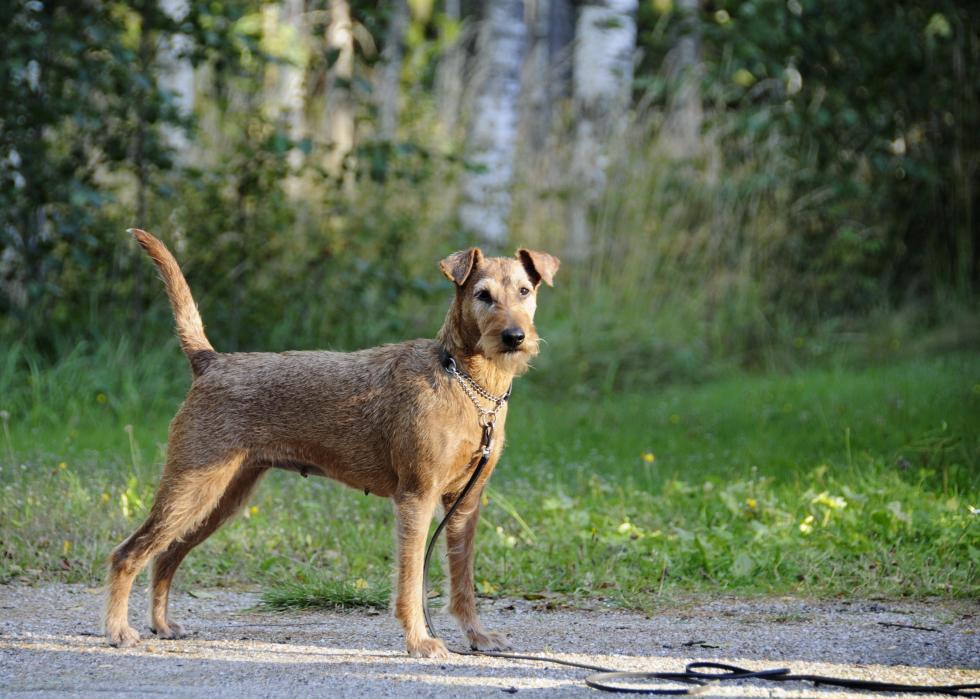
#27. Irish terrier (tie)
- Understanding of new commands: 25 to 40 repetitions
- Obey first command: 50% of the time or better
Known as the Irish terriers are famously fiery both in coat colour and temperament. These dogs have been farm dogs, watch dogs, hunting dogs, and family guardians, when their aggression is kept in check.
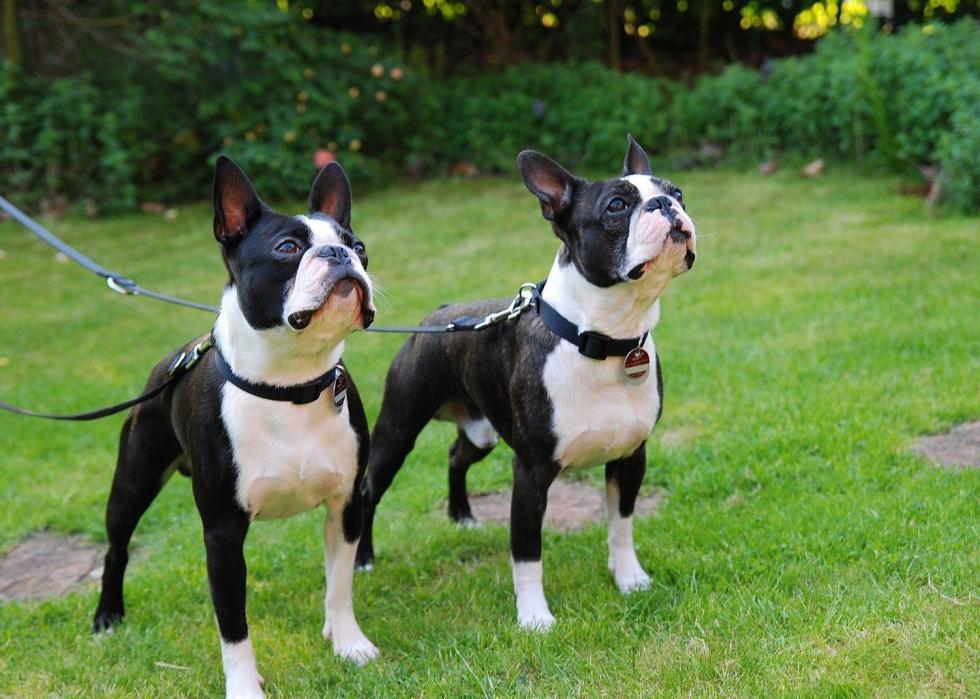
#26. Boston terrier (tie)
- Understanding of new commands: 25 to 40 repetitions
- Obey first command: 50% of the time or better
These friendly dogs are defined by their striking "tuxedo jacket" coat. From an obedience perspective, trainability can be a challenge given their energetic nature and occasional barking issues. This breed is a cross between the white English terrier and the English bulldog.
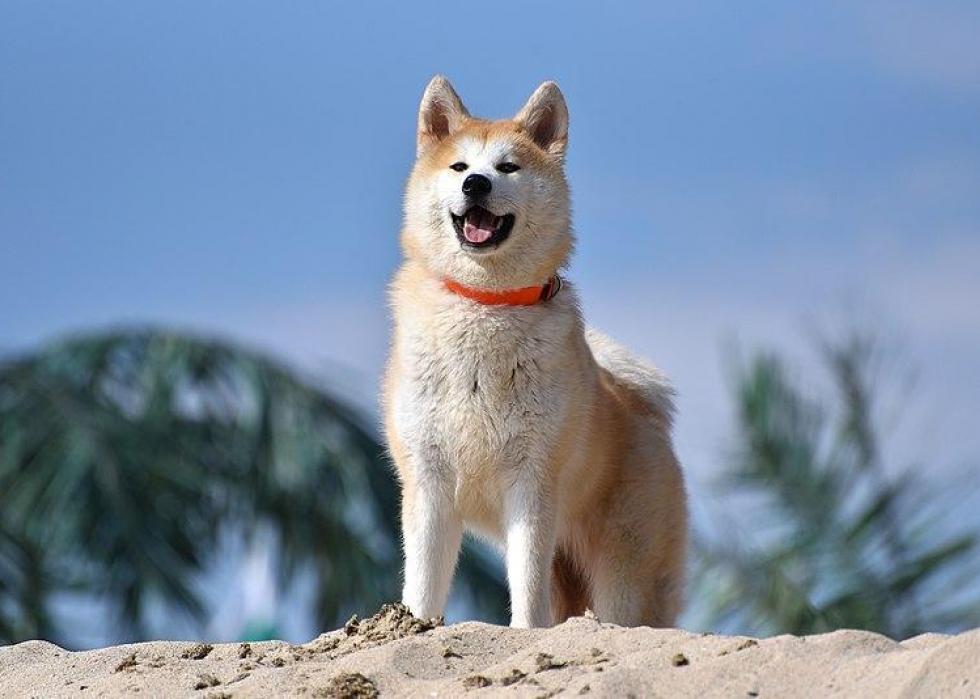
#26. Akita (tie)
- Understanding of new commands: 25 to 40 repetitions
- Obey first command: 50% of the time or better
Akitas were bred in the Akita Prefecture of northern Japan in the early 17th century and have been held in high regard in the nation ever since as powerful, loyal guard dogs. One famous Akita named Hachiko went to the Shibuya Train Station every morning for 10 years, waiting for the return of his owner who had passed away. Today, Hachiko is the subject of two movies (a Japanese film and a Hollywood adaptation), and has a statue built in his likeness outside the train station he visited.
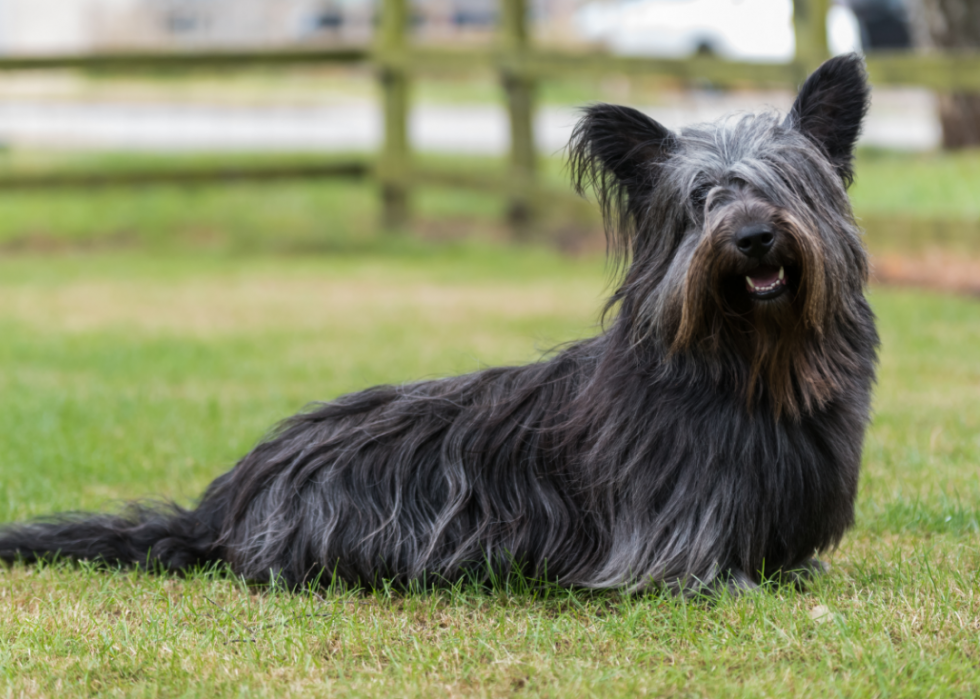
#25. Skye terrier
- Understanding of new commands: 40 to 80 repetitions
- Obey first command: 30% of the time or better
The Skye terrier can be considered courageous and well tempered, yet canny. They are also reserved and cautious with strangers.
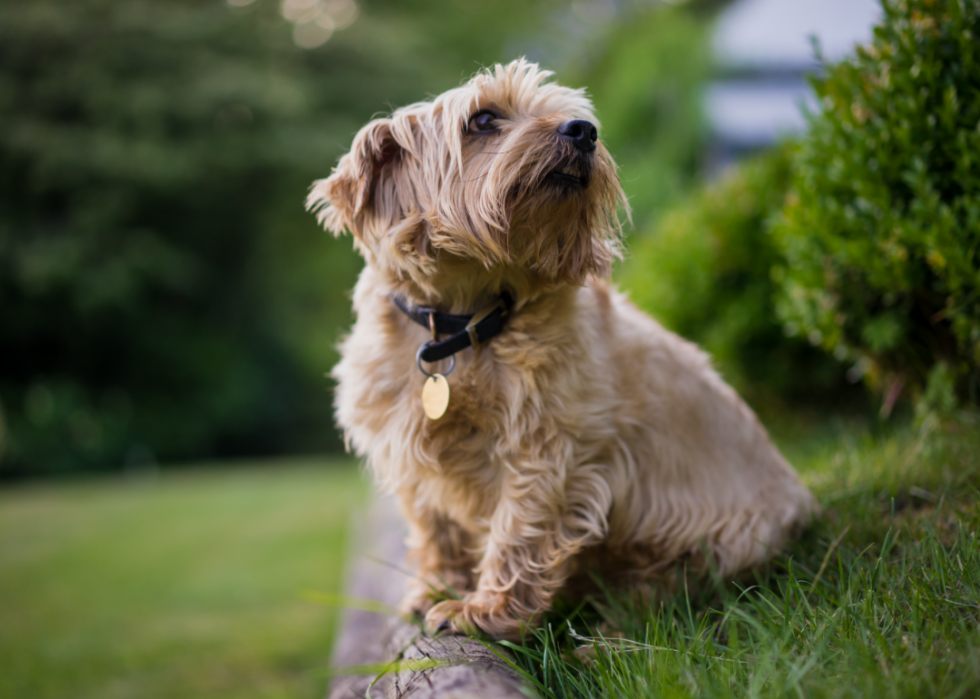
#24. Norfolk terrier (tie)
- Understanding of new commands: 40 to 80 repetitions
- Obey first command: 30% of the time or better
The Norfolk terrier can be reserved around new people. However, the breed can coexist better with other pets better than some terriers.
#24. Sealyham terrier (tie)
- Understanding of new commands: 40 to 80 repetitions
- Obey first command: 30% of the time or better
The Sealyham terrier has a reputation as a among short-legged terriers; they're small but they pack a big bark. When well trained, however, these dogs are entertaining and affectionate, and are commonly used as therapy dogs.

#23. Pug
- Understanding of new commands: 40 to 80 repetitions
- Obey first command: 30% of the time or better
The pug is one of the world's oldest breeds, dating back to when they were used as hunting dogs during the Han dynasty. With their experience as hunting dogs, they like to become the boss if their owners allow it.
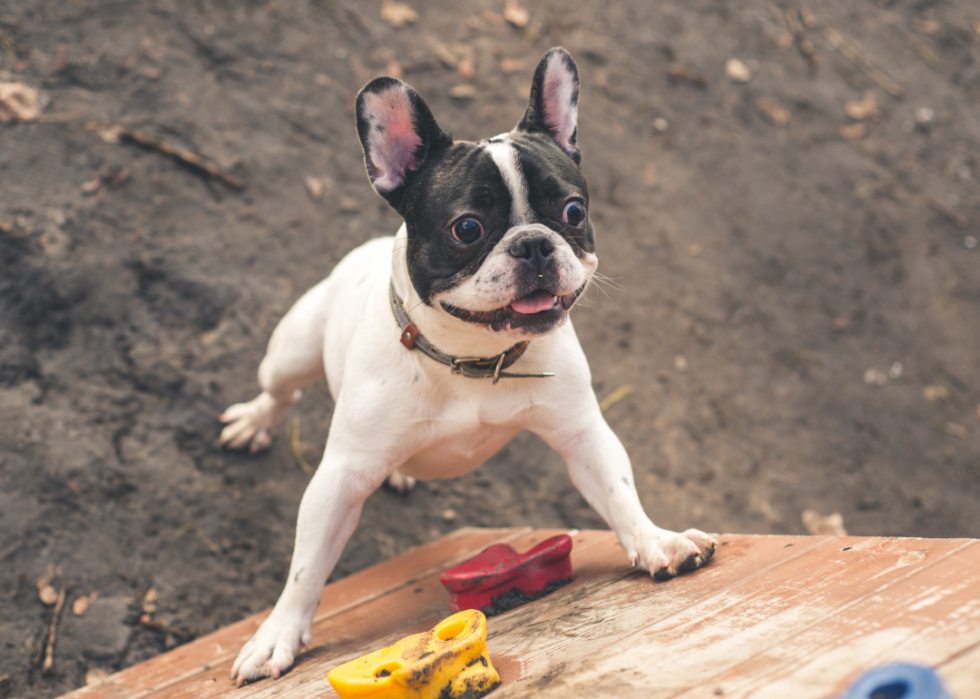
#22. French bulldog
- Understanding of new commands: 40 to 80 repetitions
- Obey first command: 30% of the time or better
A generally active breed, French bulldogs are alert and playful without being unruly. French bulldogs typically sport an even-keeled disposition.
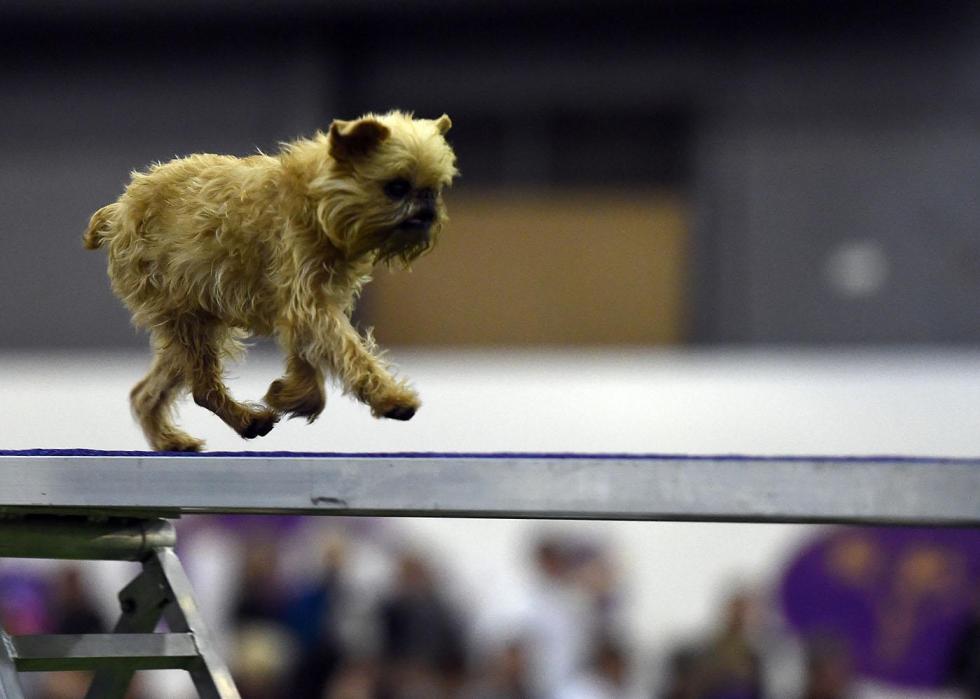
#21. Griffon Bruxellois (tie)
- Understanding of new commands: 40 to 80 repetitions
- Obey first command: 30% of the time or better
Hailing from the streets of Brussels, Belgium, this breed of griffon is fun and affectionate, but the dogs are prone to being moody and constantly crave attention, which can be a challenge for houses filled with young children.

#21. Maltese (tie)
- Understanding of new commands: 40 to 80 repetitions
- Obey first command: 30% of the time or better
Maltese make hardy pets that are ready to alert of any intruders. They are adaptable and shine on the agility course.
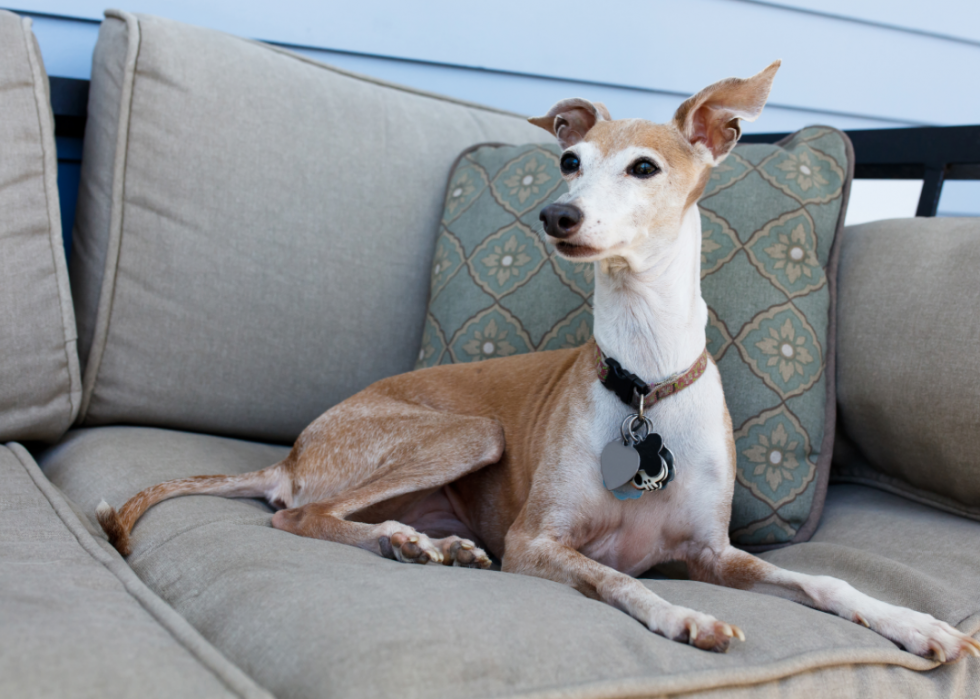
#20. Italian greyhound
- Understanding of new commands: 40 to 80 repetitions
- Obey first command: 30% of the time or better
Oftentimes oblivious of their toy size, Italian greyhounds may need to be protected against larger dogs, mischievous children, and their own curiosity. They can pose a challenge to housetrain given their active nature.
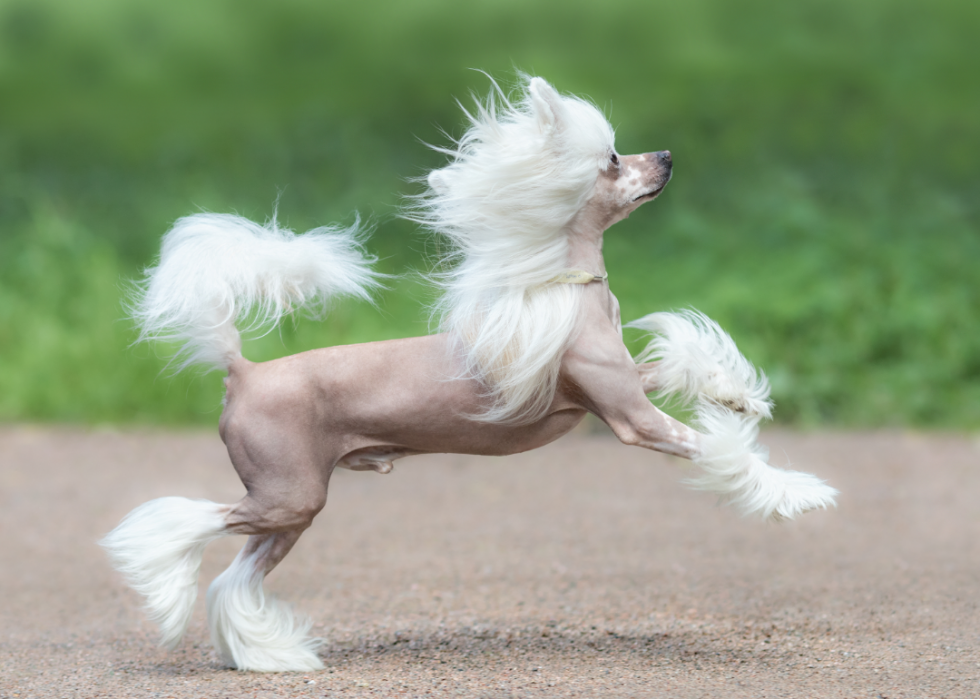
#19. Chinese crested
- Understanding of new commands: 40 to 80 repetitions
- Obey first command: 30% of the time or better
With exposed skin, Chinese cresteds . Cresteds tend to like children, but they're far too small to accommodate rough-housing, and they can be one of the most difficult breeds to housetrain.
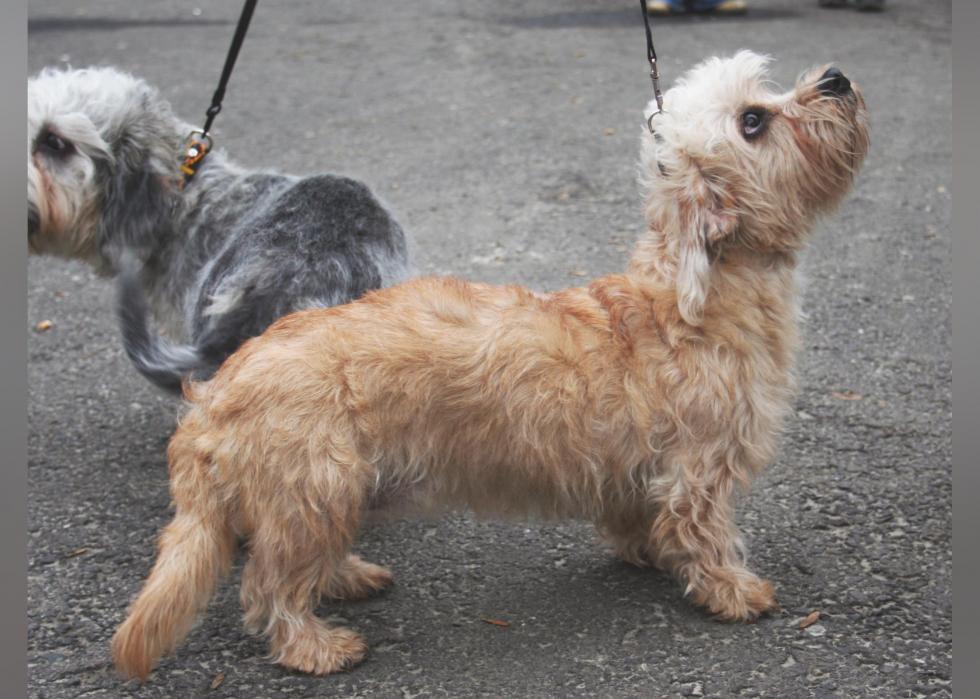
#18. Dandie Dinmont terrier (tie)
- Understanding of new commands: 40 to 80 repetitions
- Obey first command: 30% of the time or better
Dandies are small, love to hunt, and are affectionate toward people they know. Even though they do not require as much exercise and attention as other dogs, Dandies quickly become bored with repetitive tasks and will need diverse training sessions.
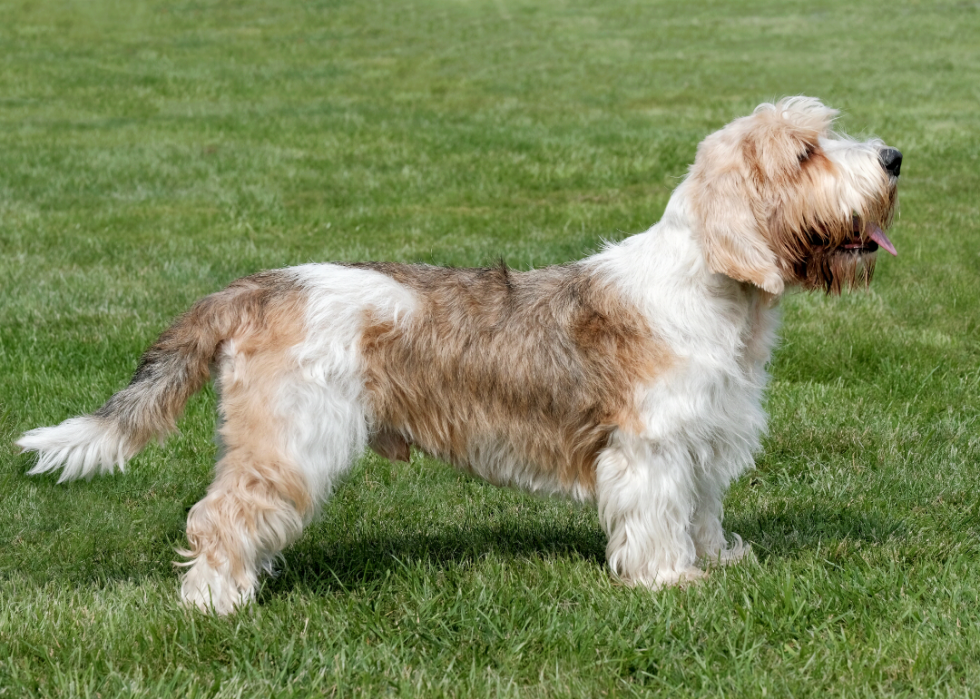
#18. Petit basset griffon Vendéen (tie)
- Understanding of new commands: 40 to 80 repetitions
- Obey first command: 30% of the time or better
A small hound breed originating in France, the PBGV was used , which led the breed to develop superior intelligence, a keen sense of smell, and agile physical strength.
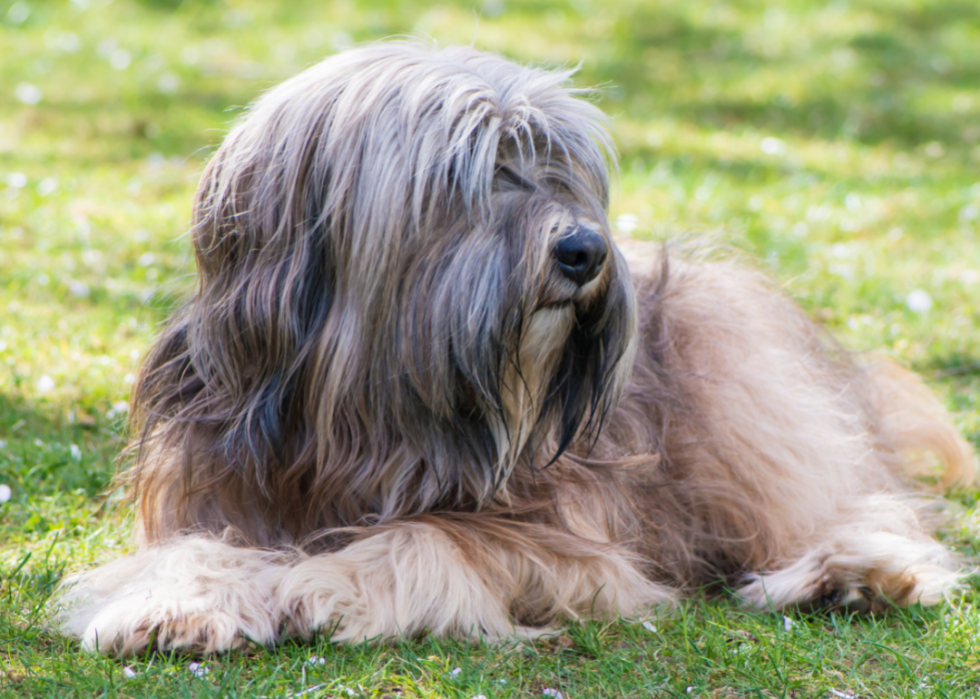
#18. Tibetan terrier (tie)
- Understanding of new commands: 40 to 80 repetitions
- Obey first command: 30% of the time or better
Contrary to their name, Tibetan terriers are not an actual terrier breed, but have been called that . These dogs are energetic, intelligent, and independent, which can be a tricky combination for trainers to work with, but rewarding with the right amount of patience.
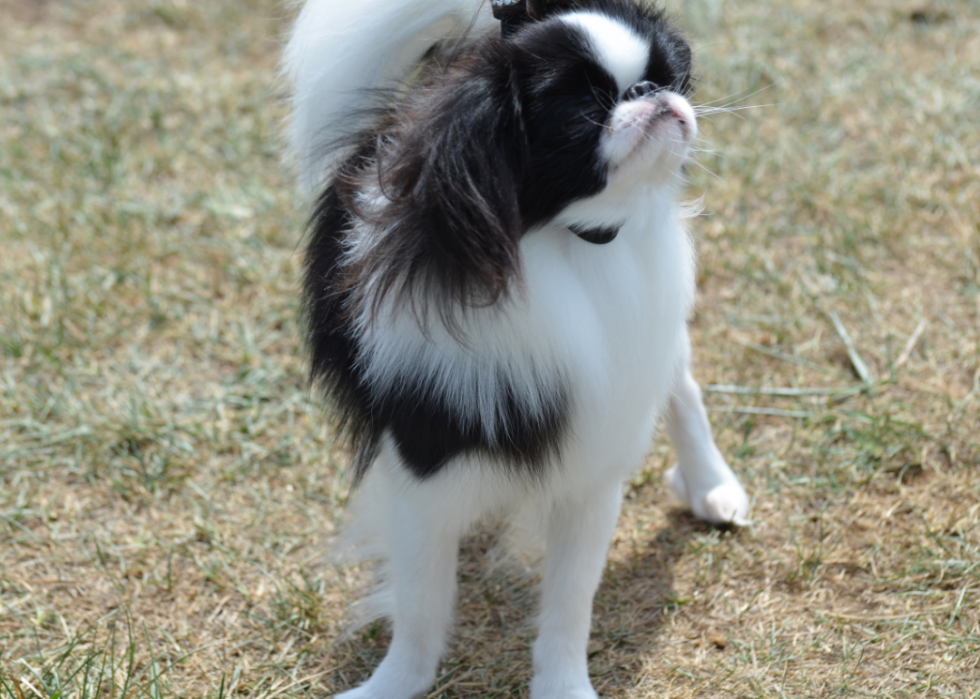
#18. Japanese Chin (tie)
- Understanding of new commands: 40 to 80 repetitions
- Obey first command: 30% of the time or better
Known historically for being bred as and other aristocrats, the small and playful Japanese Chin dogs are best trained through positive reinforcement and fun activities that help them learn new tricks.
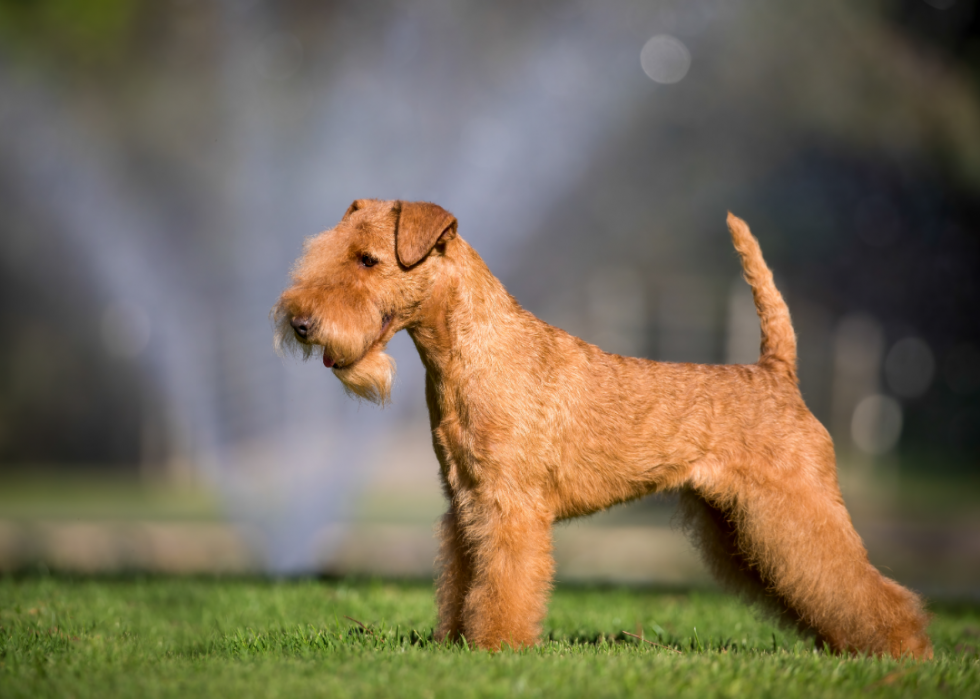
#18. Lakeland terrier (tie)
- Understanding of new commands: 40 to 80 repetitions
- Obey first command: 30% of the time or better
Known best for their uniquely hairy, cylindrical snout, Lakeland terriers stand at about 14 to 15 inches and weigh approximately 17 pounds when fully grown. The breed is named for its origin in the Lake Region in the north of England, where it was originally used to ward off foxes that threatened sheep herds.
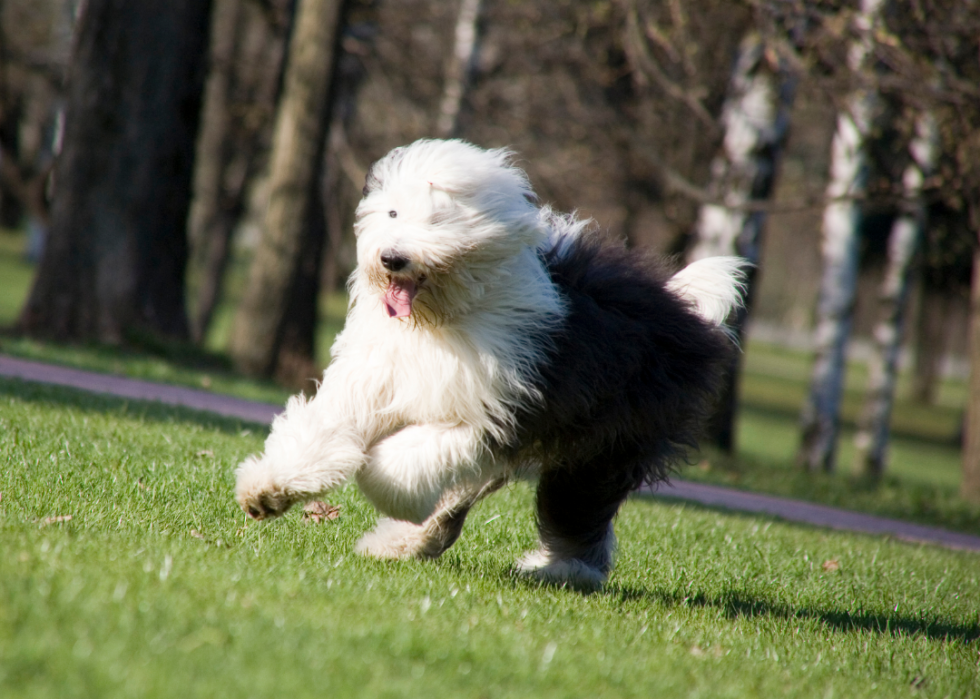
#17. Old English sheepdog
- Understanding of new commands: 40 to 80 repetitions
- Obey first command: 30% of the time or better
Old English sheepdogs have a tendency to bark and howl. They also have a relatively large need for exercise.
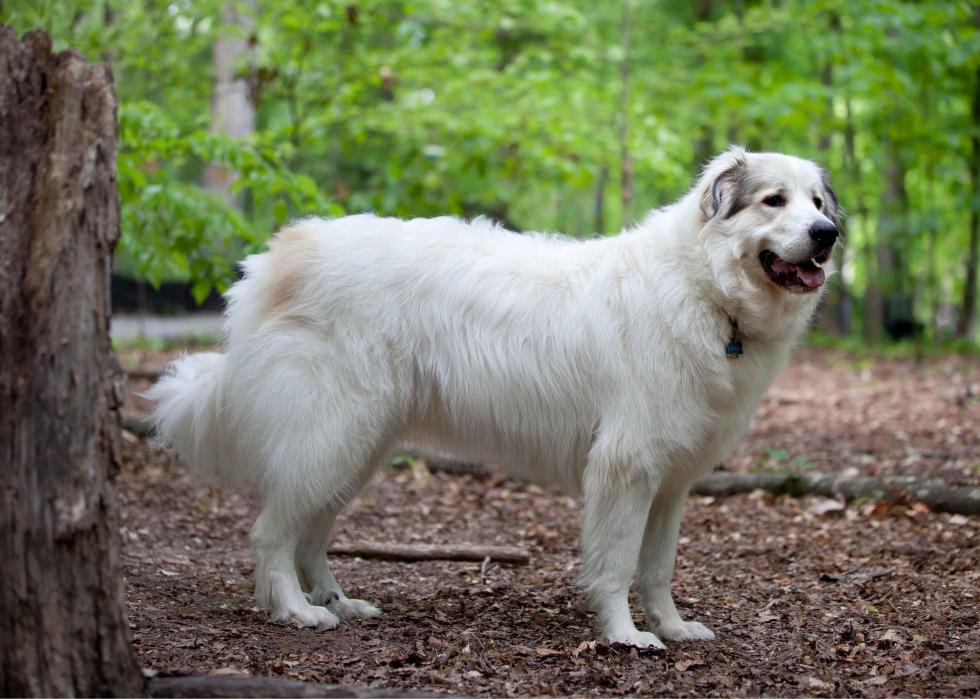
#16. Great Pyrenees
- Understanding of new commands: 40 to 80 repetitions
- Obey first command: 30% of the time or better
Great Pyrenees make skilled protectors. These large dogs can jump into action at the drop of a dime to protect their owners.
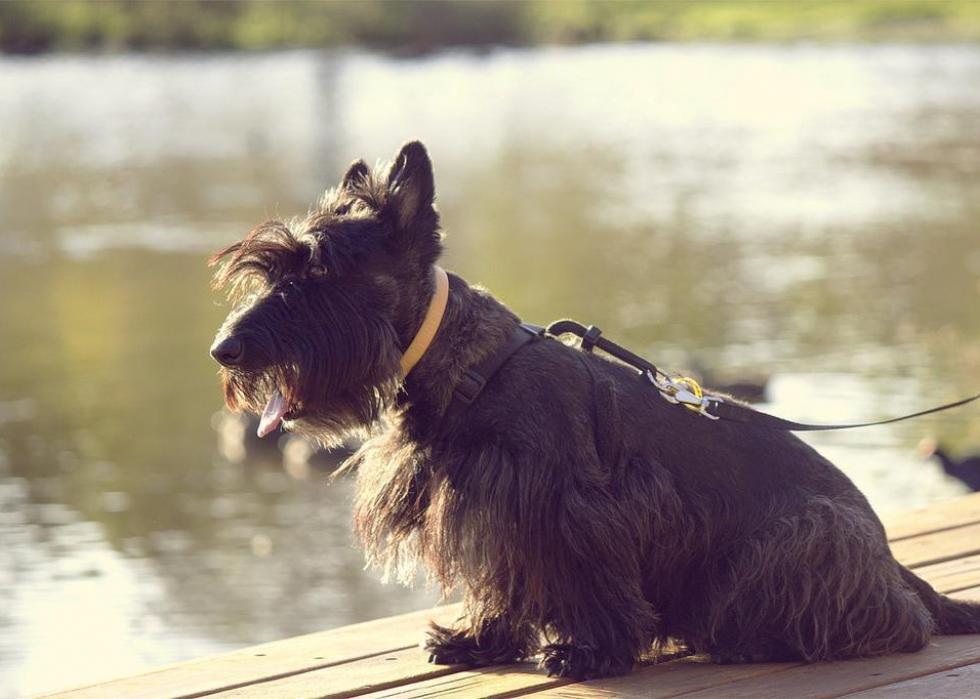
#15. Scottish terrier (tie)
- Understanding of new commands: 40 to 80 repetitions
- Obey first command: 30% of the time or better
A , Scotties were bred as watchdogs and farm helpers, so they are used to being independent and aloof. They carry themselves with confidence and respond well to different vocal cues.
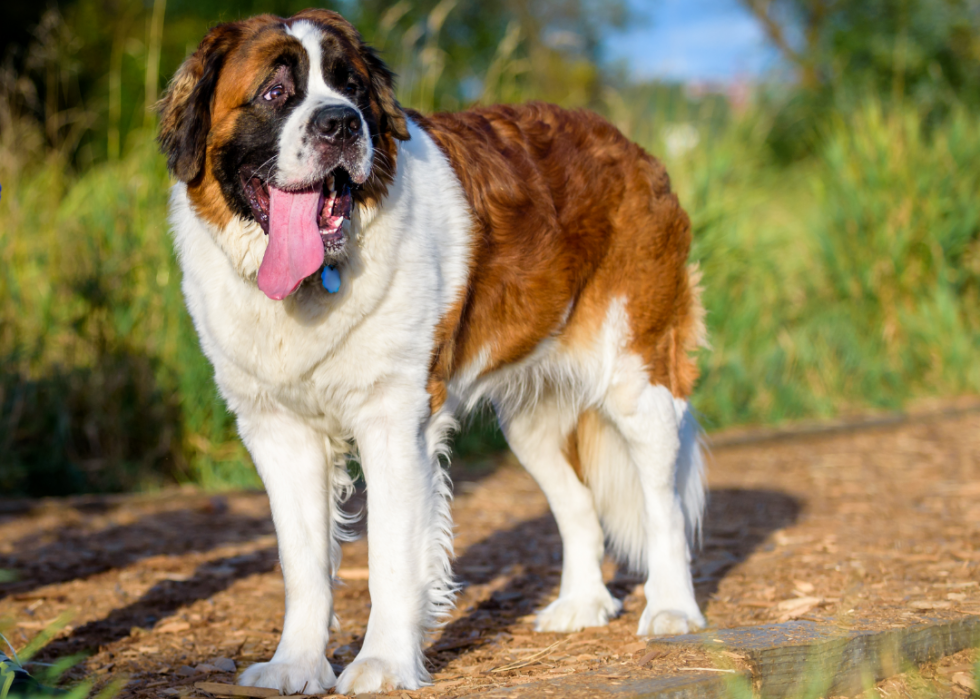
#15. Saint Bernard (tie)
- Understanding of new commands: 40 to 80 repetitions
- Obey first command: 30% of the time or better
While Saint Bernards can make great companions, be prepared to deal with temperament issues. Saint Bernards can demand a decent amount of training.
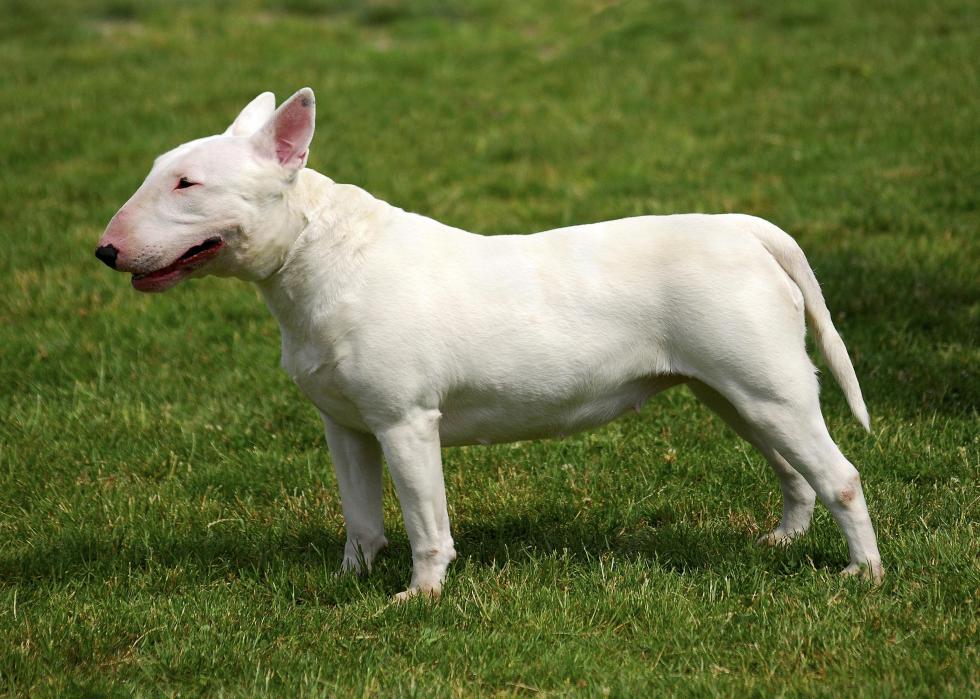
#14. Bull terrier
- Understanding of new commands: 40 to 80 repetitions
- Obey first command: 30% of the time or better
Bull terriers were originally developed as a fighting breed. With a little extra attention to discipline, can have positive results.
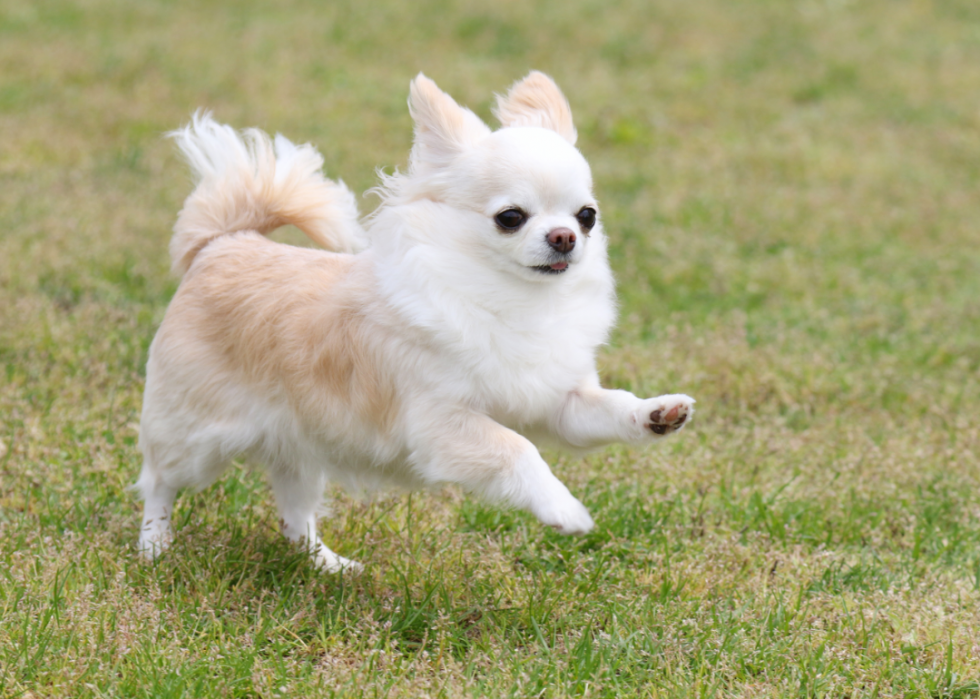
#13. Chihuahua
- Understanding of new commands: 40 to 80 repetitions
- Obey first command: 30% of the time or better
Rarely growing taller than 8 inches or larger than 6 pounds, it's no surprise that Chihuahuas have become known affectionately as "purse dogs." While the breed originally hailing from Mexico , it can typically get more than sufficient exercise in a small space because of its slender frame.
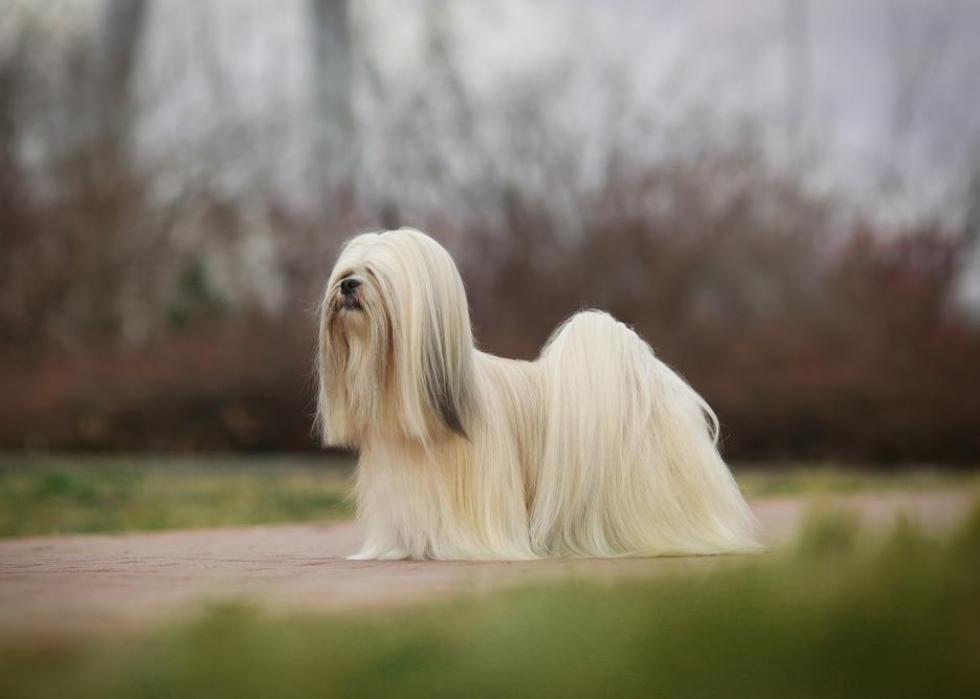
#12. Lhasa Apso
- Understanding of new commands: 40 to 80 repetitions
- Obey first command: 30% of the time or better
Originally bred in Tibet to be a defender, the Lhasa Apso's peculiar appearance and demeanour can be a fright to people walking through the front door. One must consider their protective nature prior to choosing one as a family pet.

#11. Bullmastiff
- Understanding of new commands: 40 to 80 repetitions
- Obey first command: 30% of the time or better
Known to be independent thinkers, bullmastiffs make good family pets if trained consistently. However, they top out at 130 pounds of mostly muscle and have the potential to be aggressive.
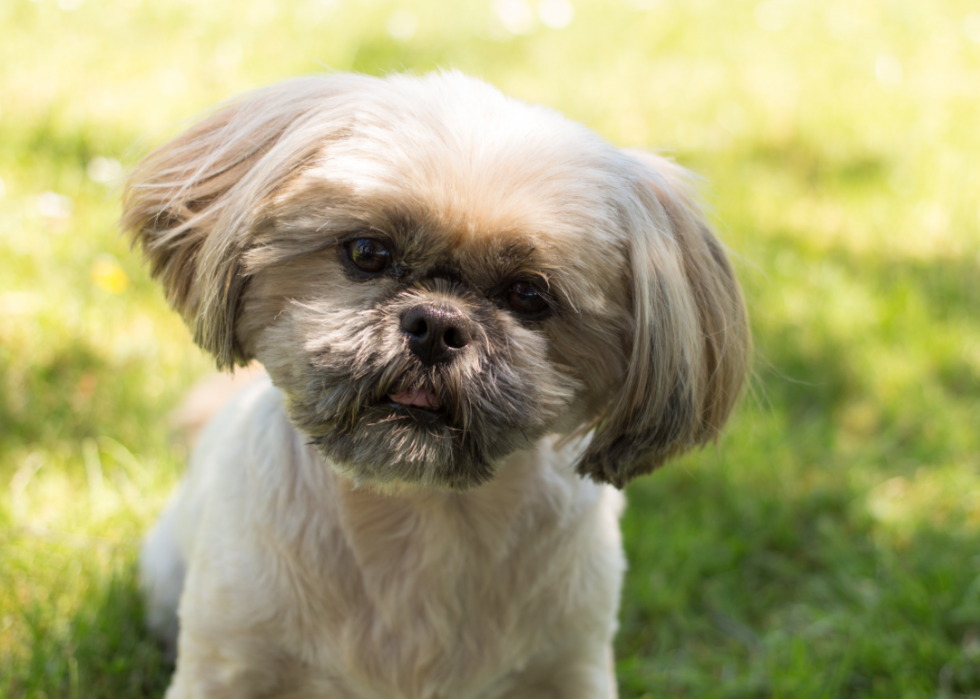
#10. Shih tzu
- Understanding of new commands: 80 to 100 repetitions or more
- Obey first command: 25% of the time or worse
The 20th most popular dog breed in America, shih tzus are cute companions that stick around for quite some time, with the typical lifespan ranging from 10 to 18 years. Shih tzus have a strongly rooted historical association with royalty, as they were the preferred lapdog of multiple Chinese emperors.
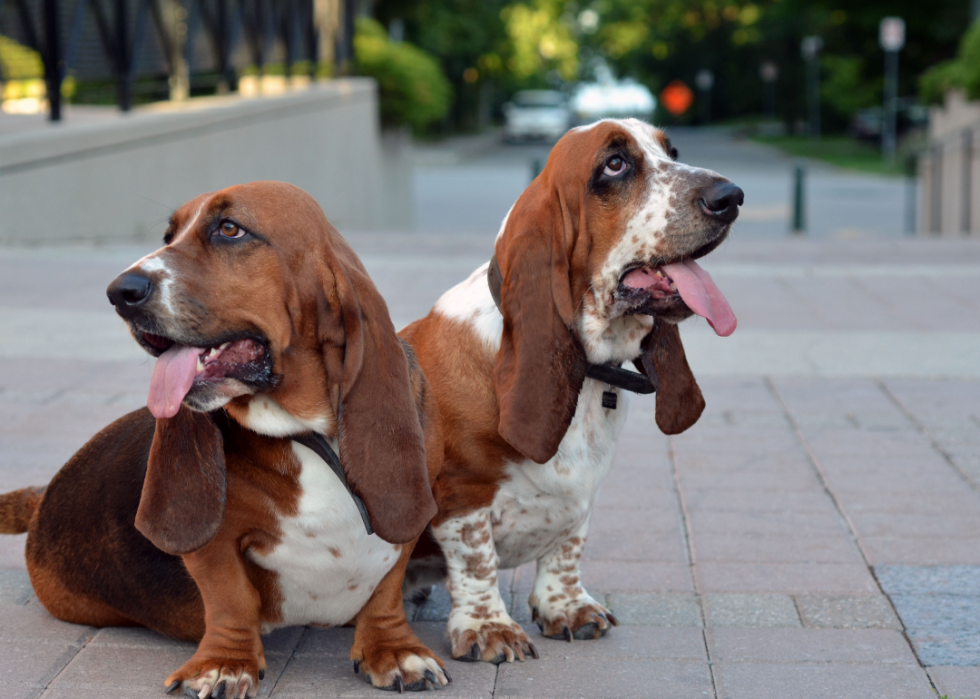
#9. Basset hound
- Understanding of new commands: 80 to 100 repetitions or more
- Obey first command: 25% of the time or worse
The basset hound has an extremely strong sense of smell, in following ability. They do not prefer to be alone for long periods of time, and can become destructive if left on their own for too long.
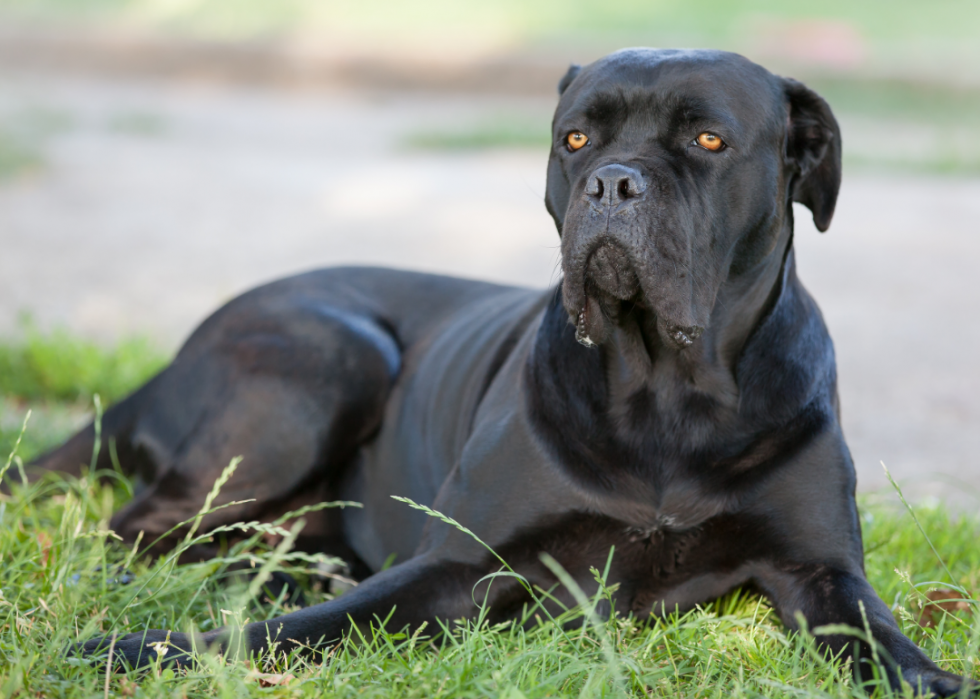
#8. Mastiff (tie)
- Understanding of new commands: 80 to 100 repetitions or more
- Obey first command: 25% of the time or worse
Mastiffs stand out due to their large size, as they are one of the heaviest dog breeds out there. A mastiff dog is usually calm and loving to its family, as long as you can get past its stubbornness during training sessions.

#8. Beagle (tie)
- Understanding of new commands: 80 to 100 repetitions or more
- Obey first command: 25% of the time or worse
While beagles are popular pets today, the breed was originally developed with the intention of pack hunting. While of the breed name, historians hypothesize that it derives from "be'geule," the French word for the noise they make while hunting.
#7. Pekingese
- Understanding of new commands: 80 to 100 repetitions or more
- Obey first command: 25% of the time or worse
Pekingese are known to be independent, stubborn, and difficult to train. This breed can also be considered aloof with strangers.
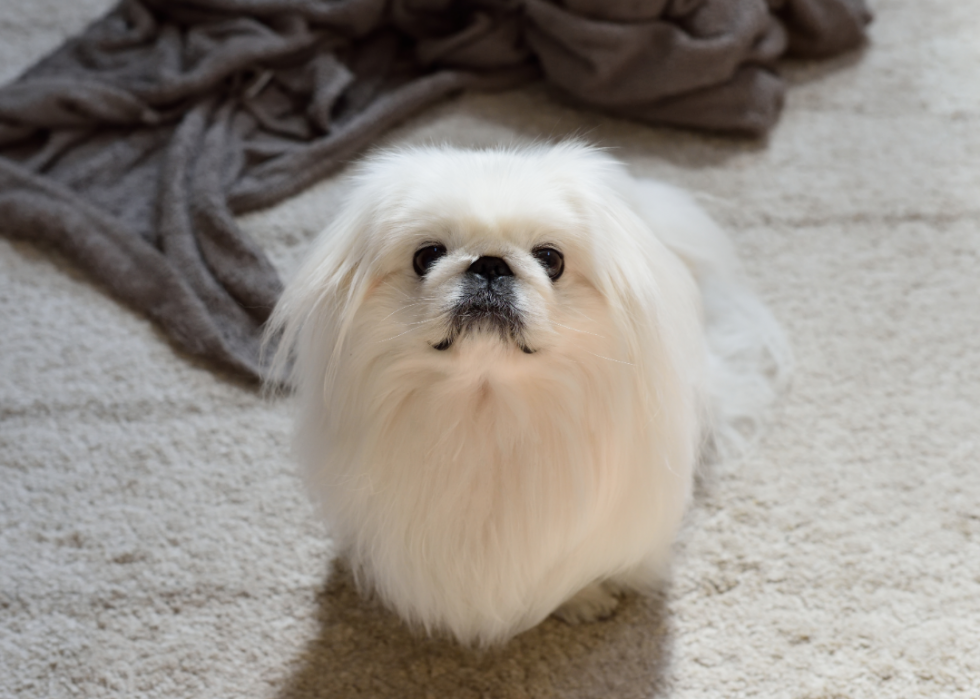
#6. Bloodhound
- Understanding of new commands: 80 to 100 repetitions or more
- Obey first command: 25% of the time or worse
Bloodhounds are known to be and can be interested in wherever the nose takes them; this can pose an issue with obedience training.

#5. Borzoi
- Understanding of new commands: 80 to 100 repetitions or more
- Obey first command: 25% of the time or worse
While borzois were bred to chase game, this behaviour can be avoided with early obedience training. Early training also helps the borzoi with being around all types of people and animals.
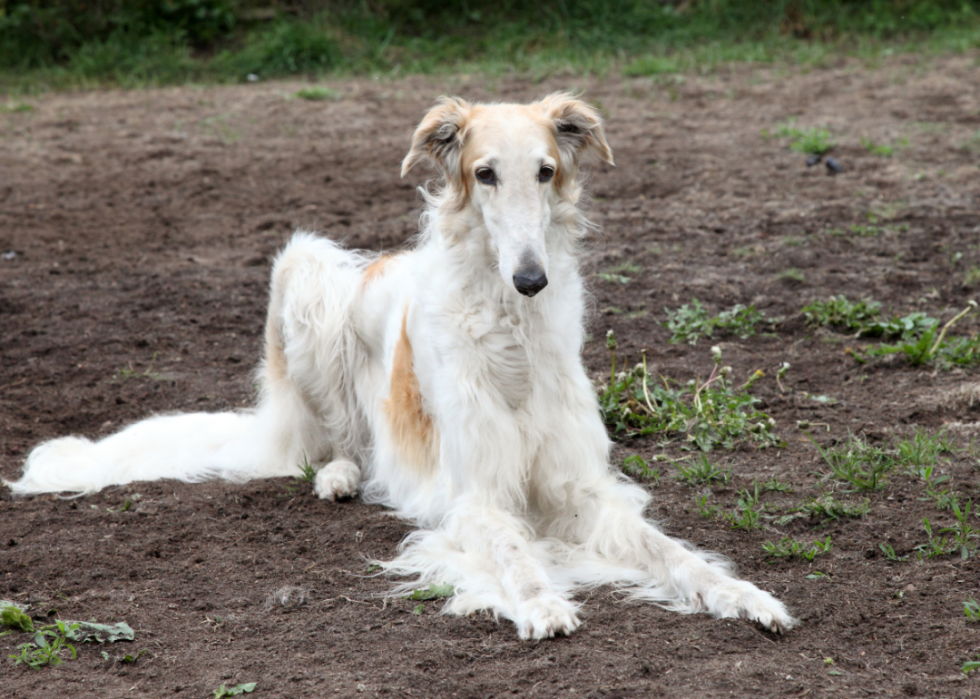
#4. Chow chow
- Understanding of new commands: 80 to 100 repetitions or more
- Obey first command: 25% of the time or worse
Chow Chows are intensely loyal, but can be stubborn. They need repetition, early and often.

#3. Bulldog
- Understanding of new commands: 80 to 100 repetitions or more
- Obey first command: 25% of the time or worse
Bulldogs can also benefit from early socialization and training. They are constant chewers and like playing tug-of-war. Early discipline encourages learning when this game is appropriate.

#2. Basenji
- Understanding of new commands: 80 to 100 repetitions or more
- Obey first command: 25% of the time or worse
Basenjis will . They are ferocious chewers—anything left on the floor is fair game.

#1. Afghan hound
- Understanding of new commands: 80 to 100 repetitions or more
- Obey first command: 25% of the time or worse
The Afghan hound has an , and this mentality translates to being difficult to train. They were originally groomed as predators, and can continue that tendency through maturity.
